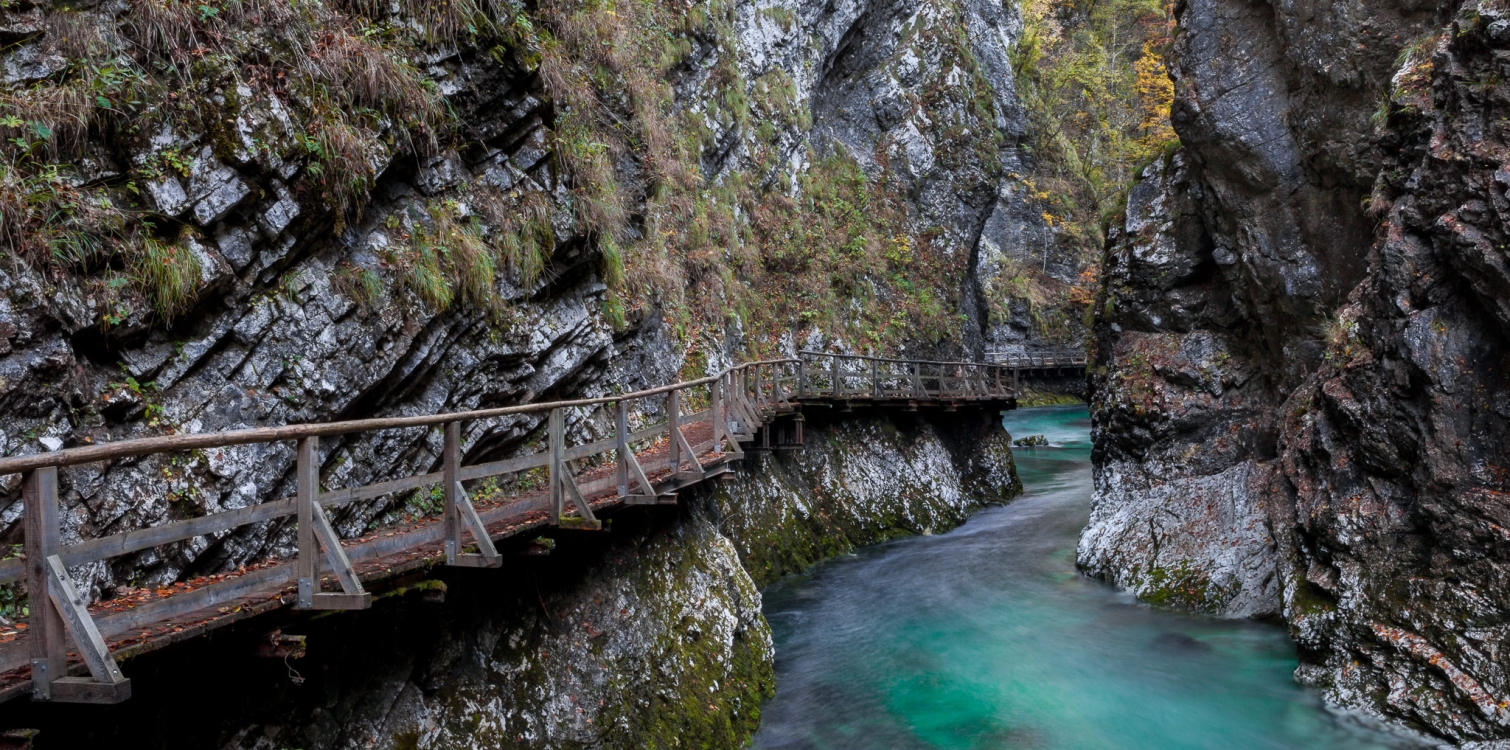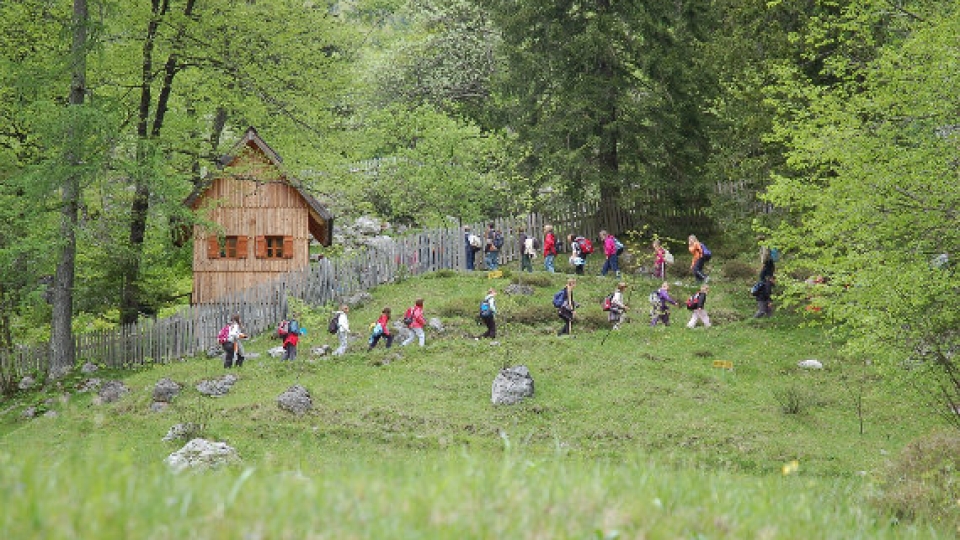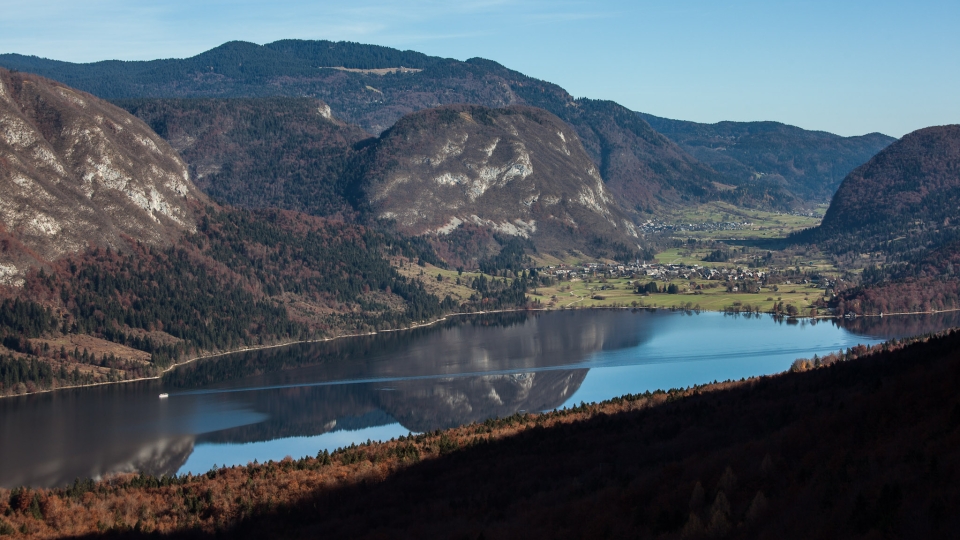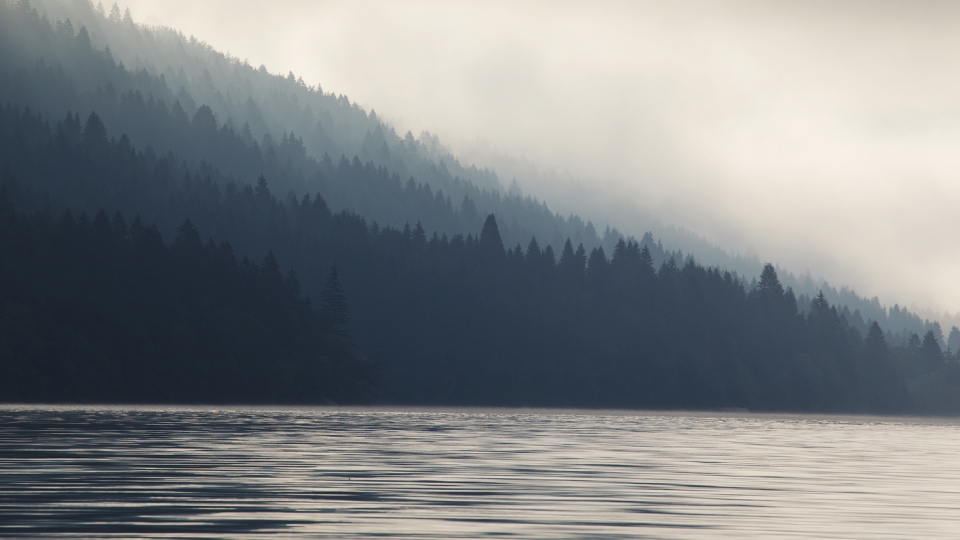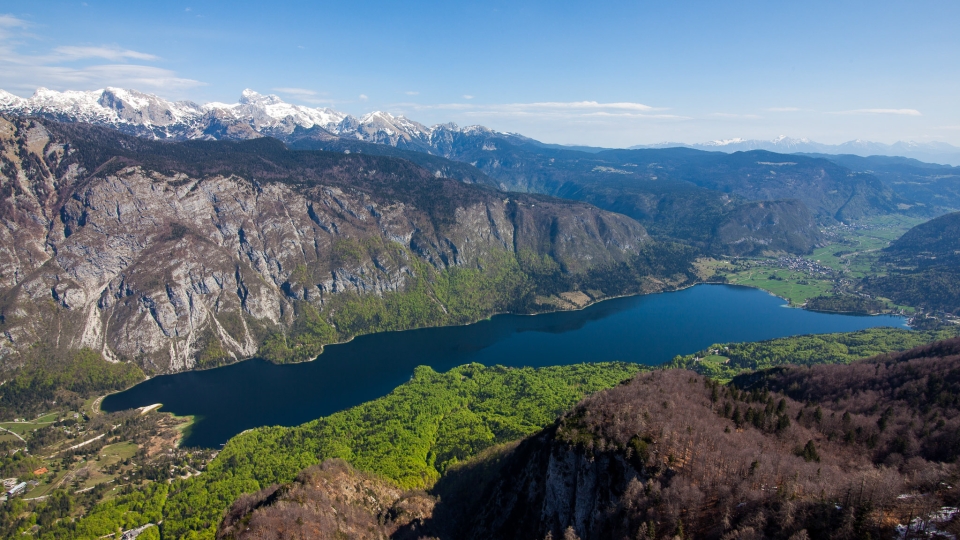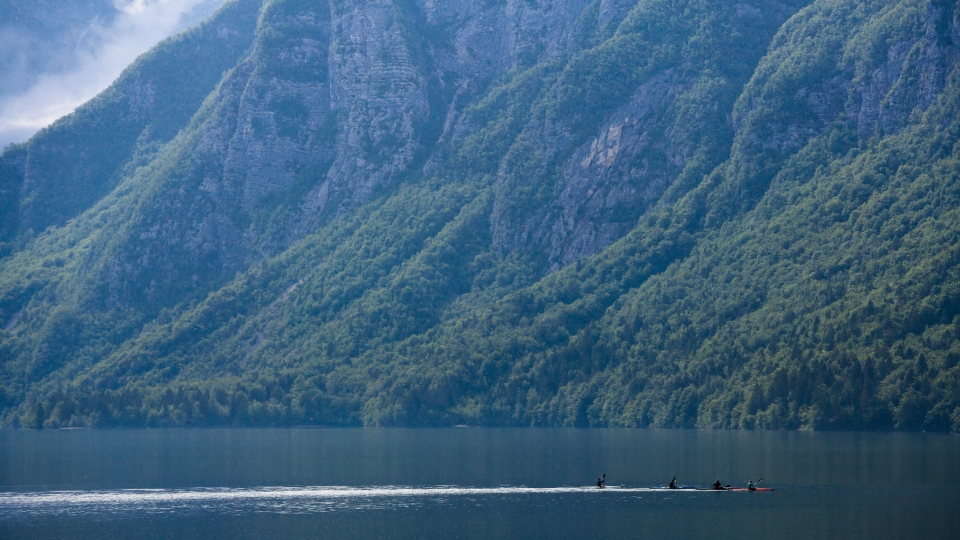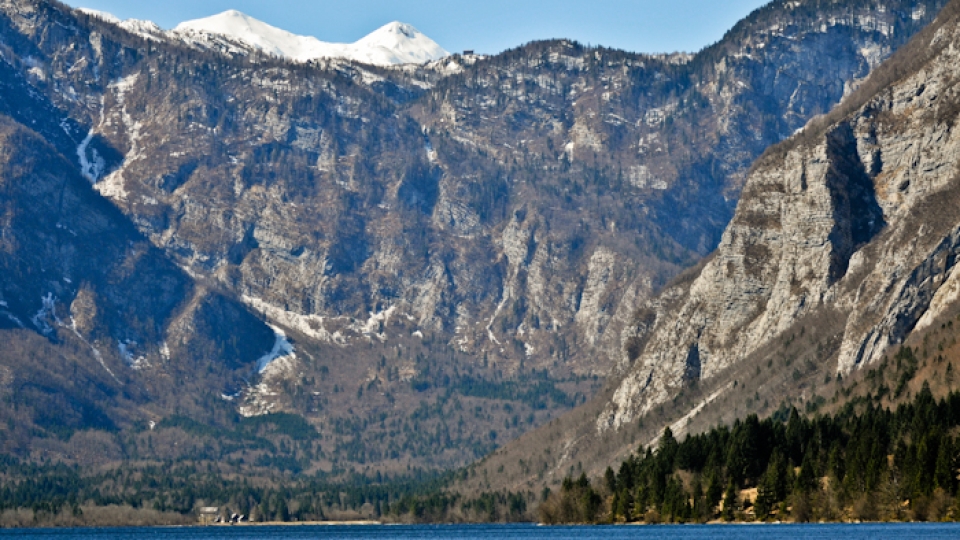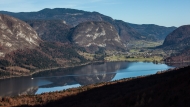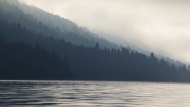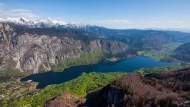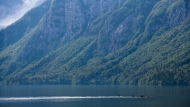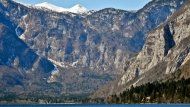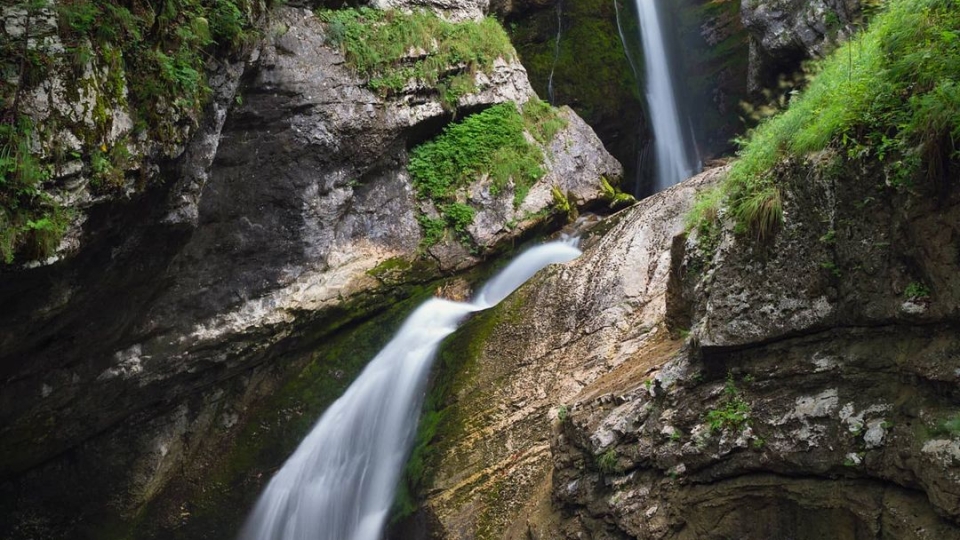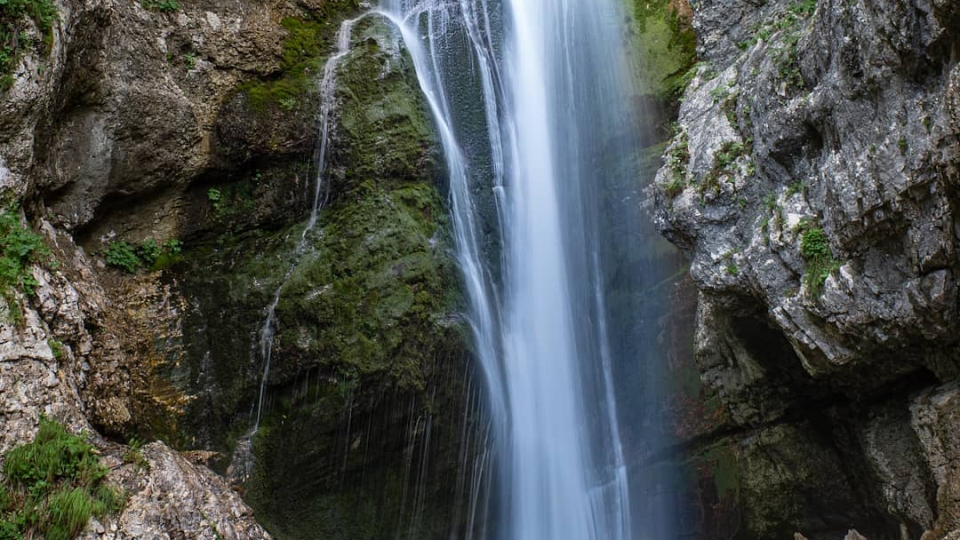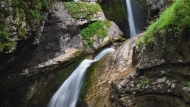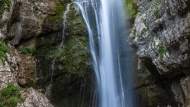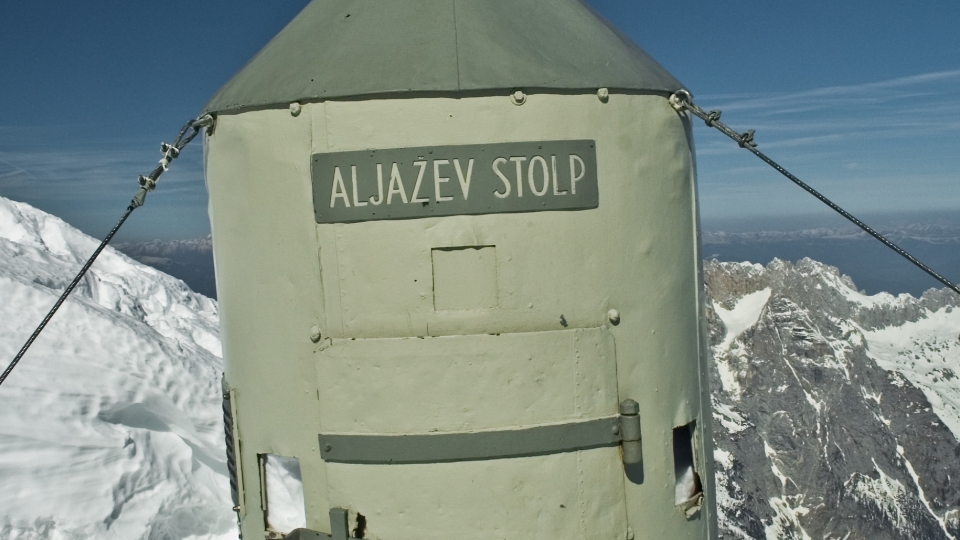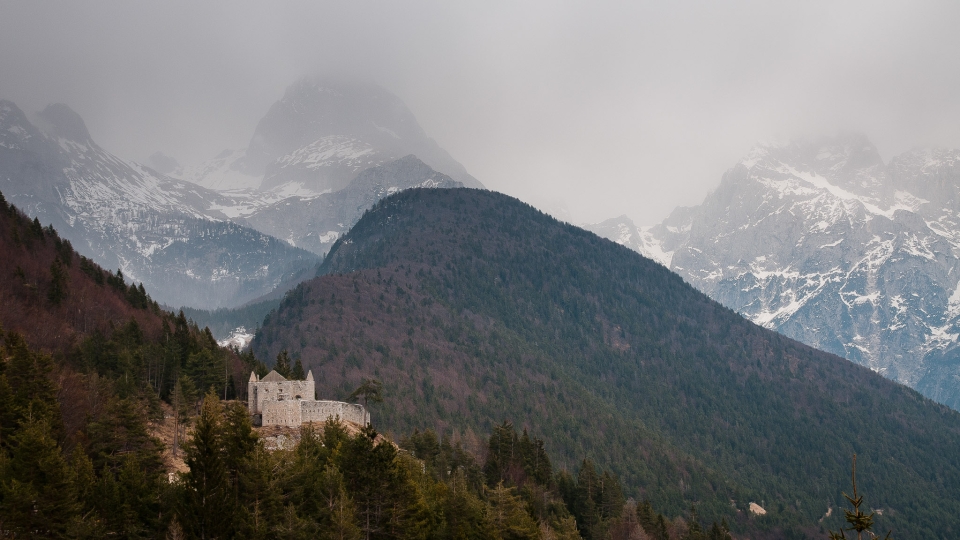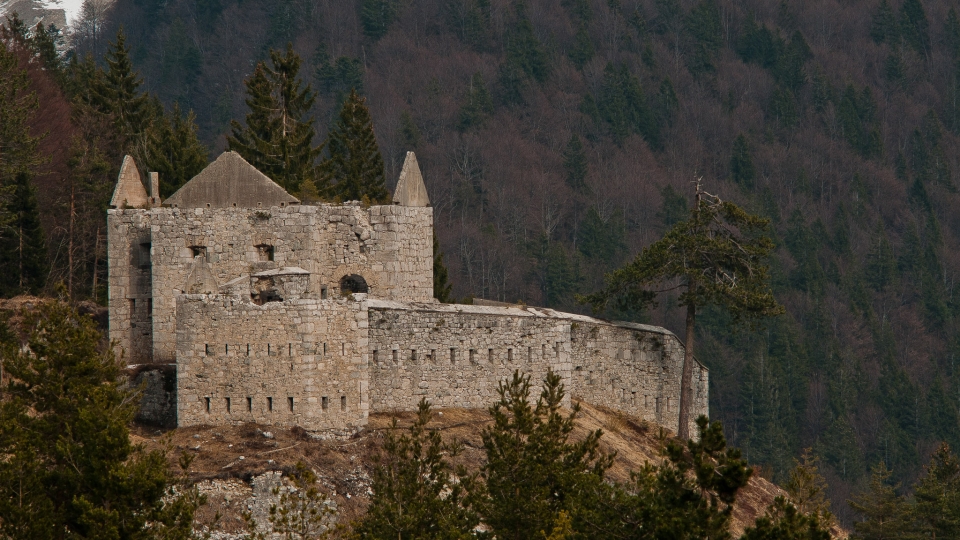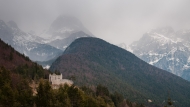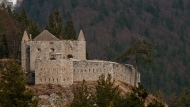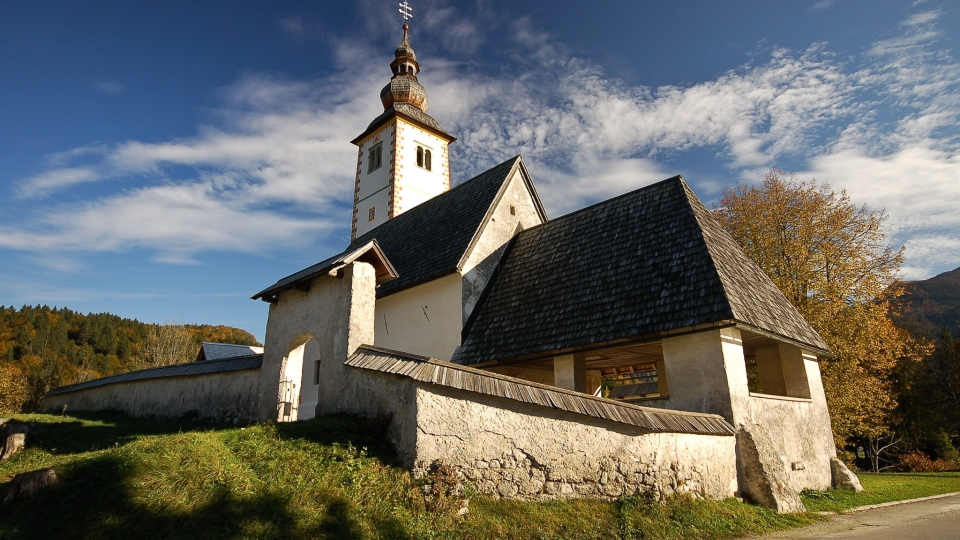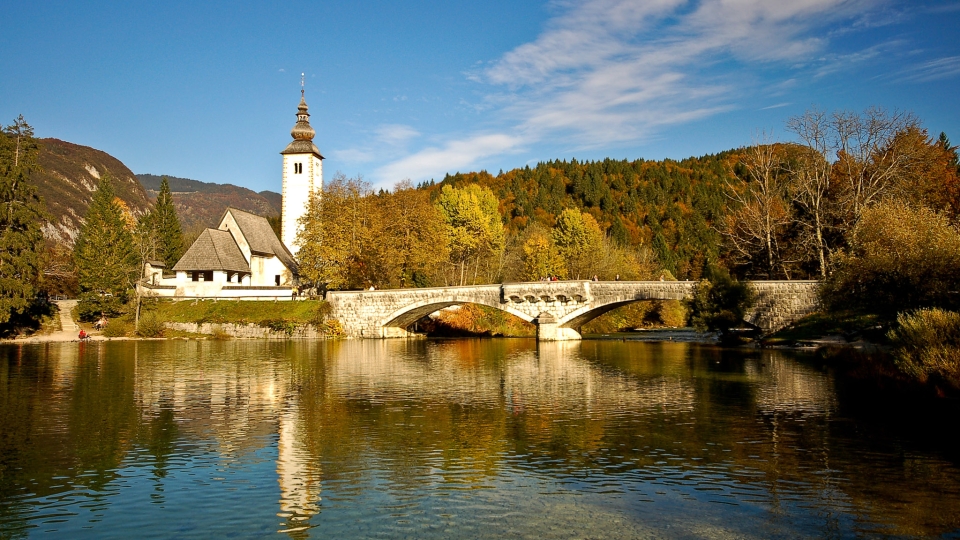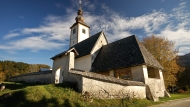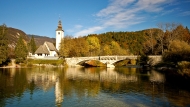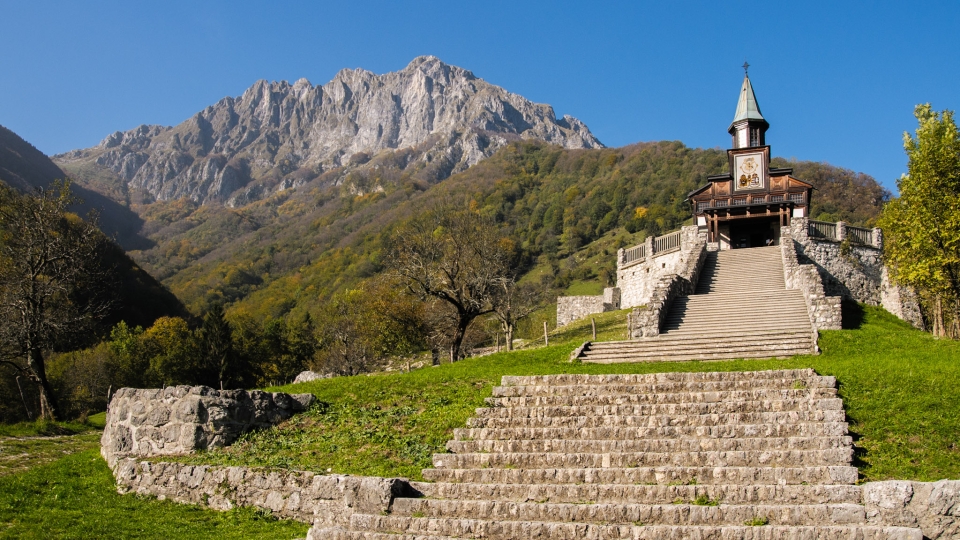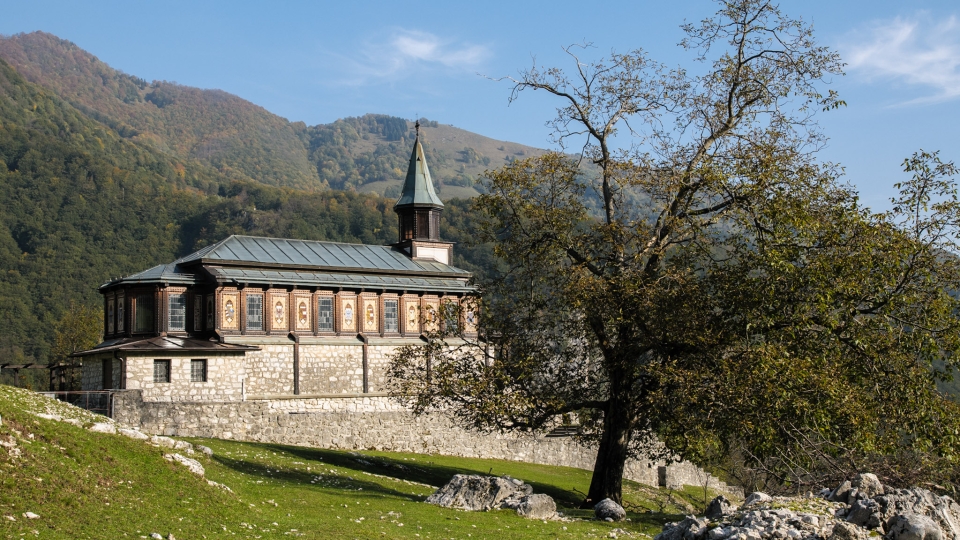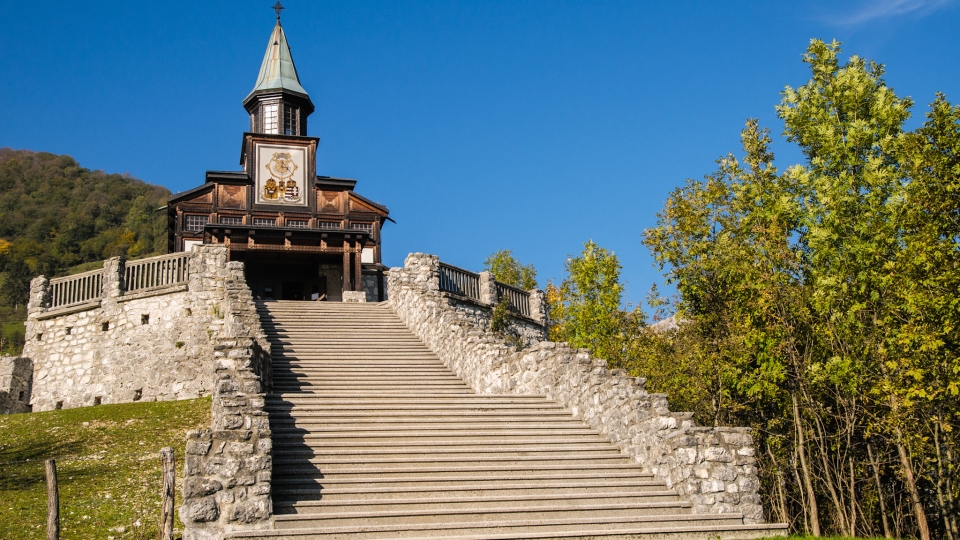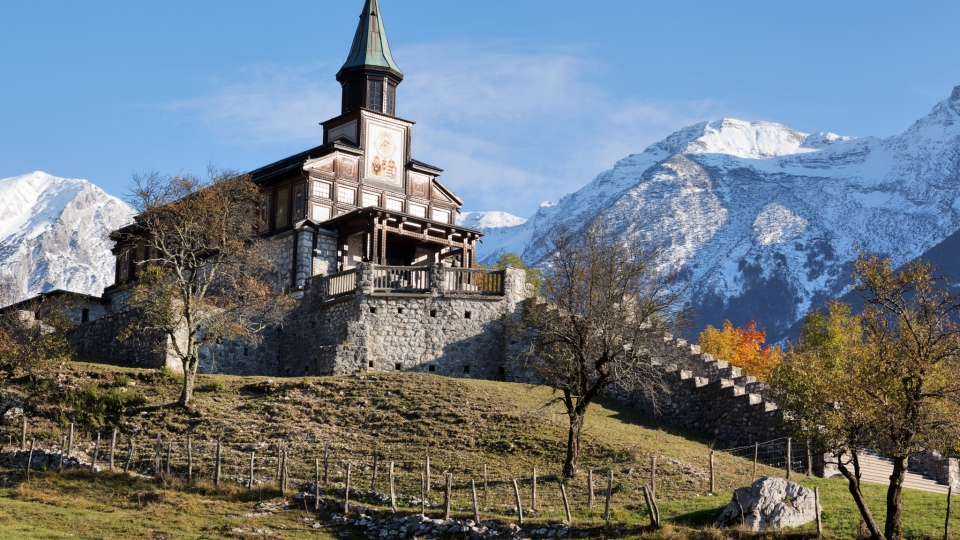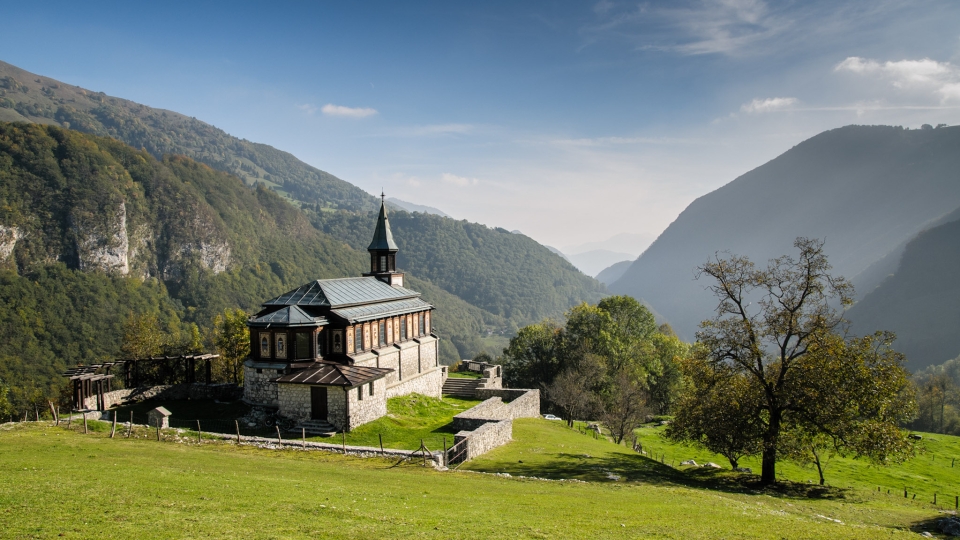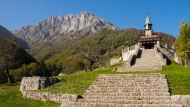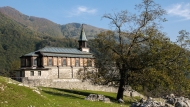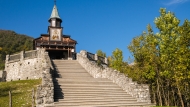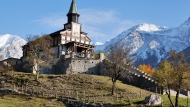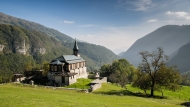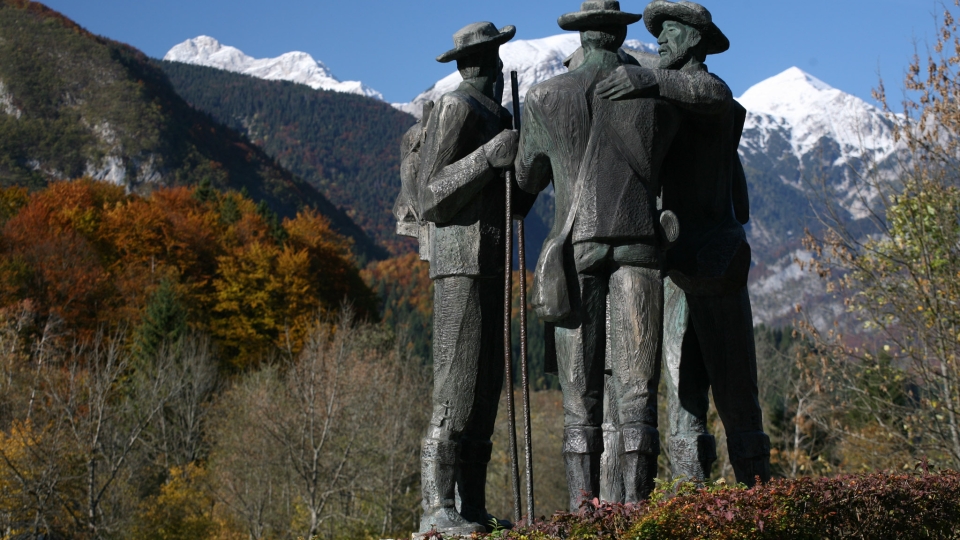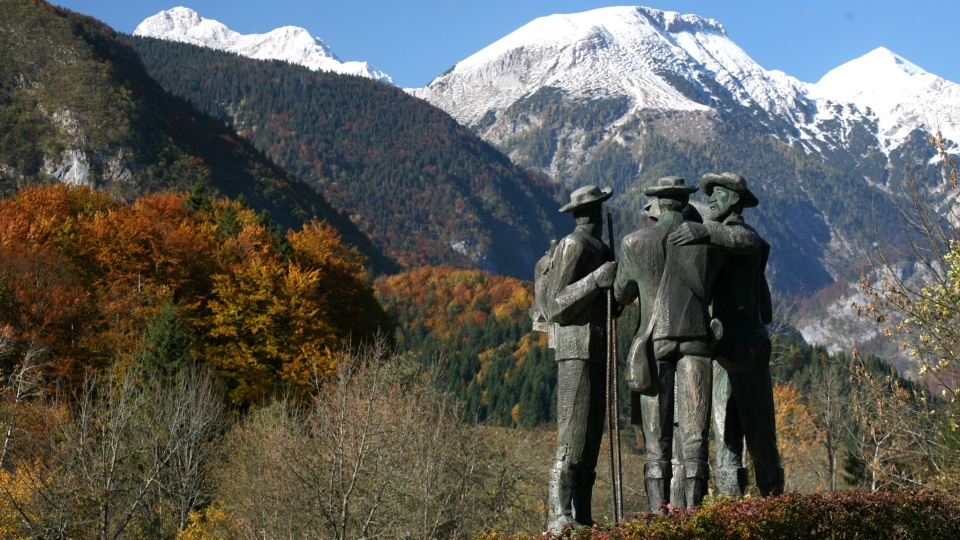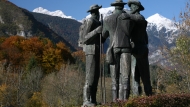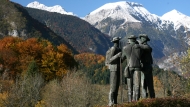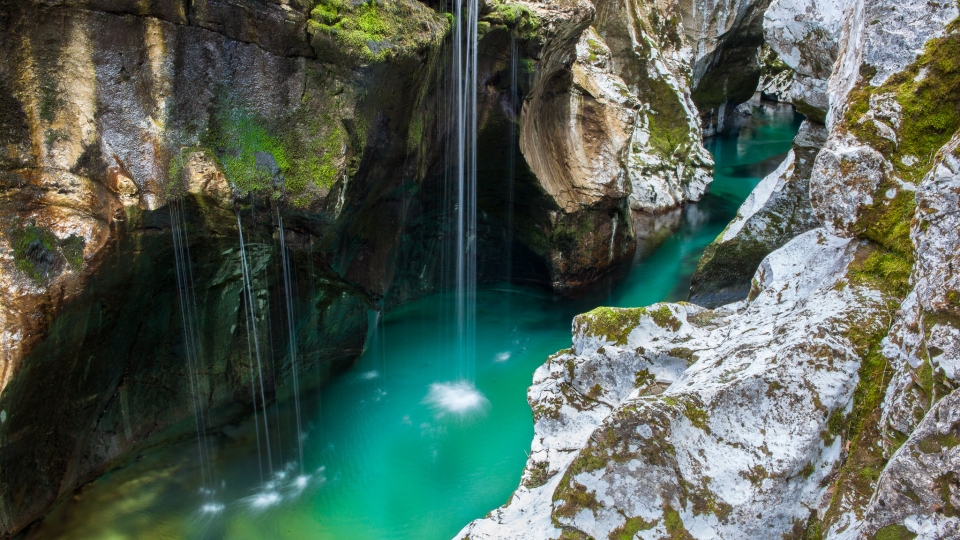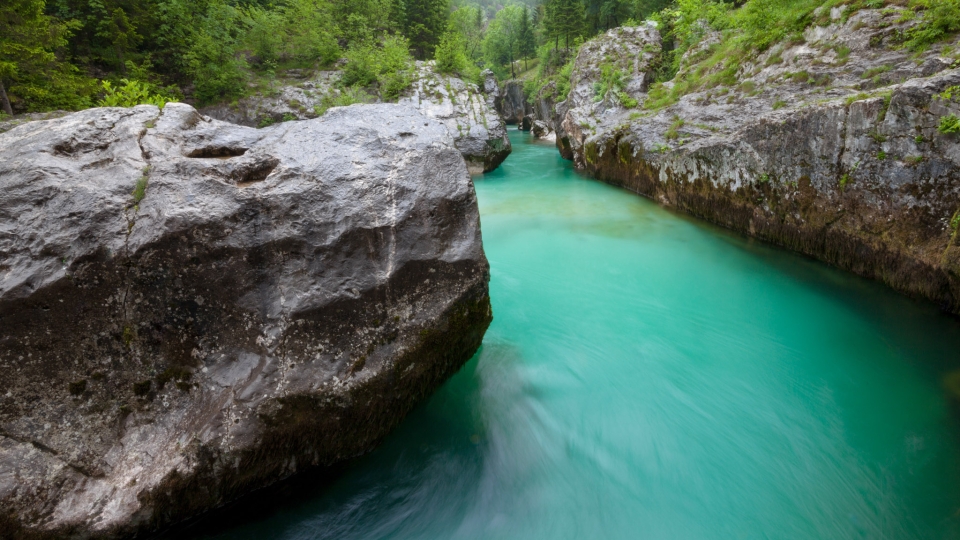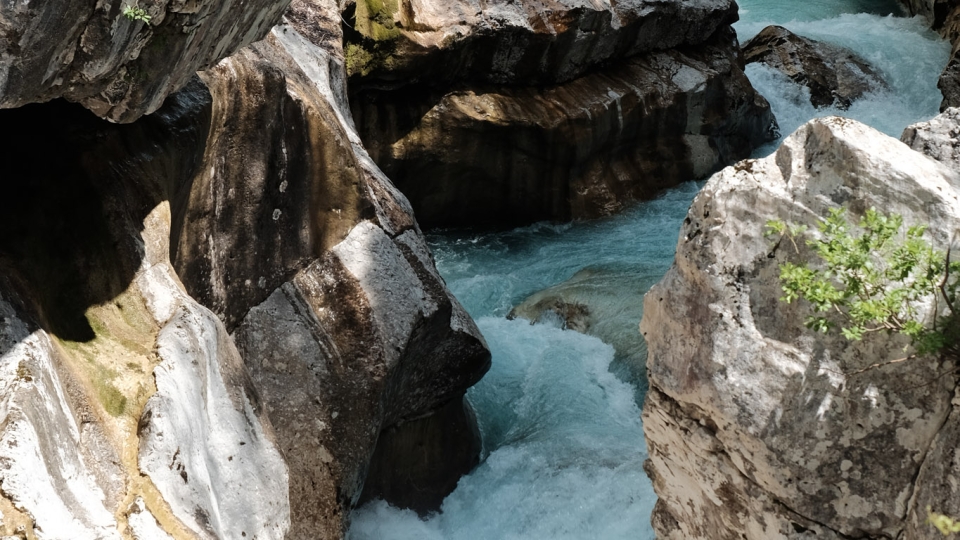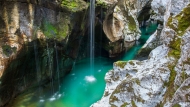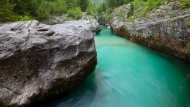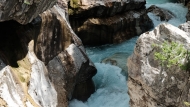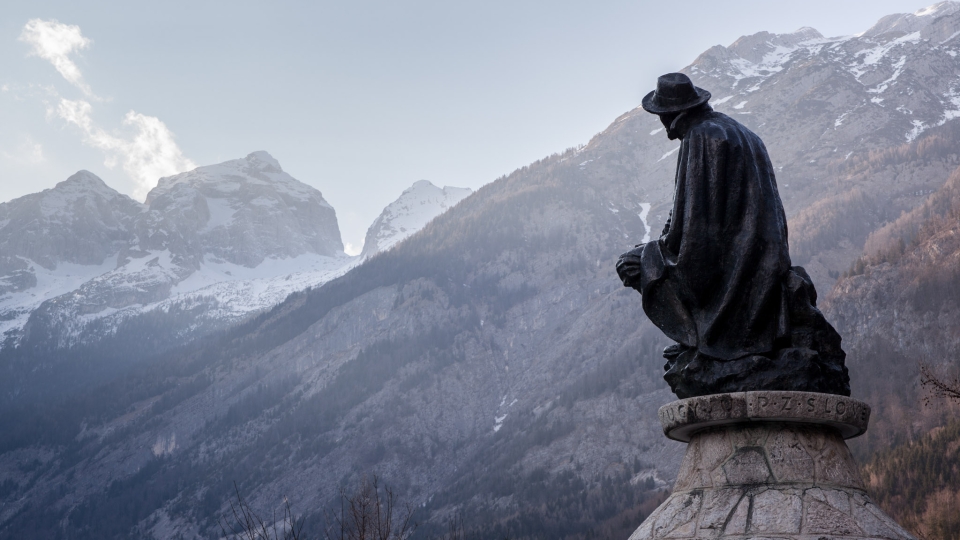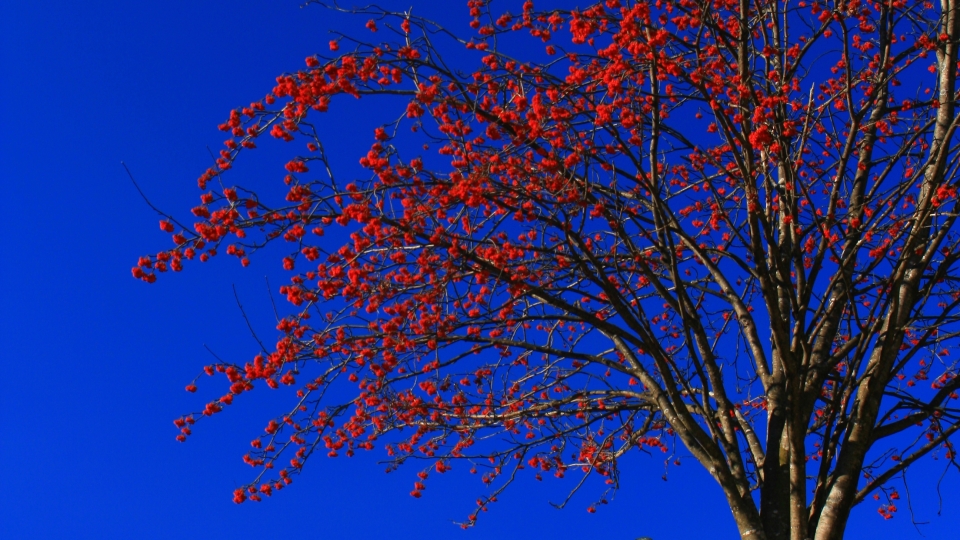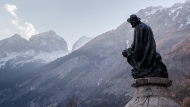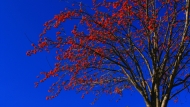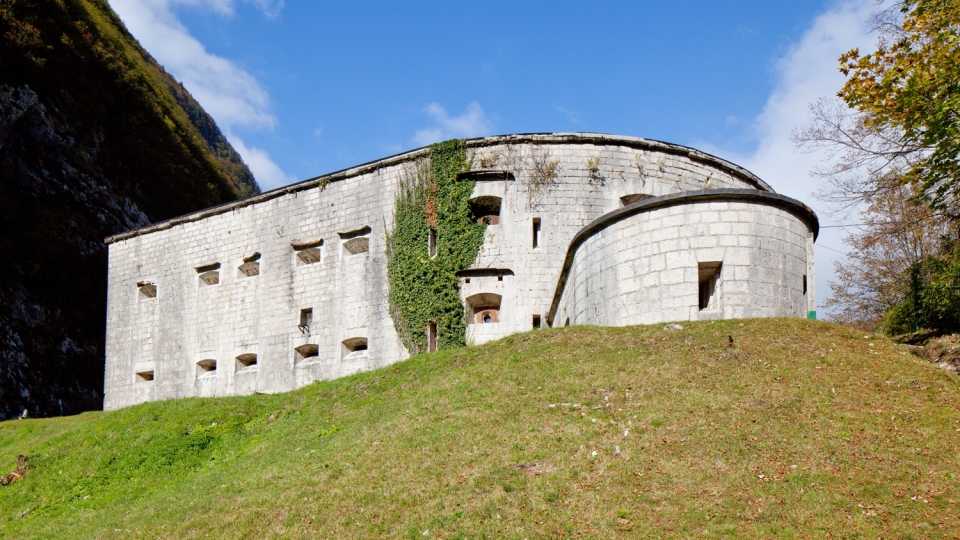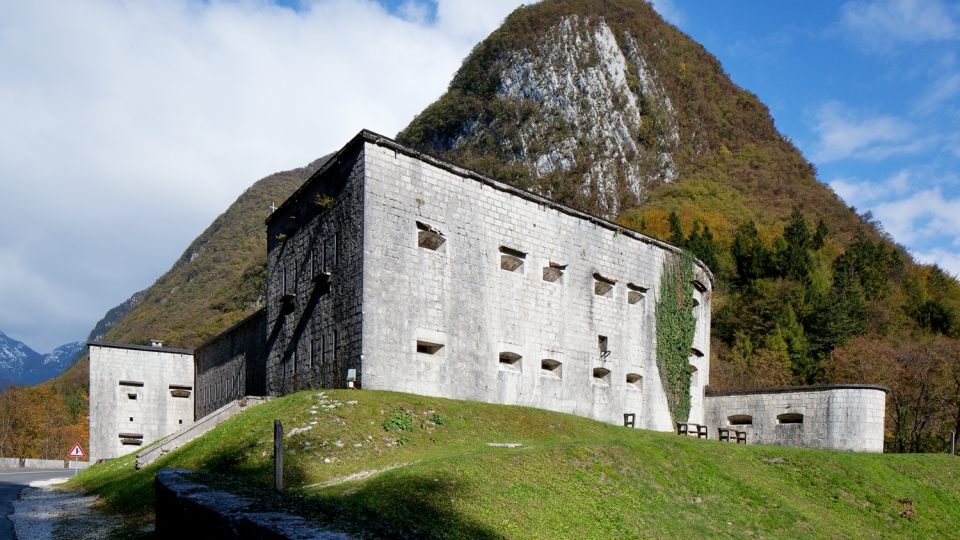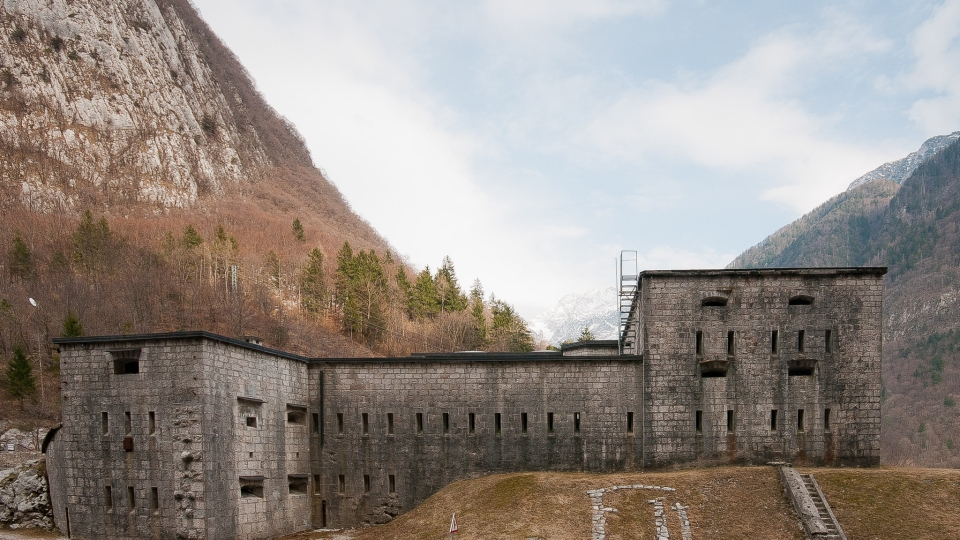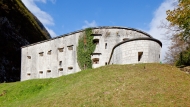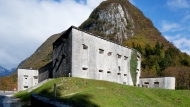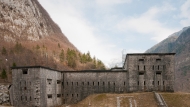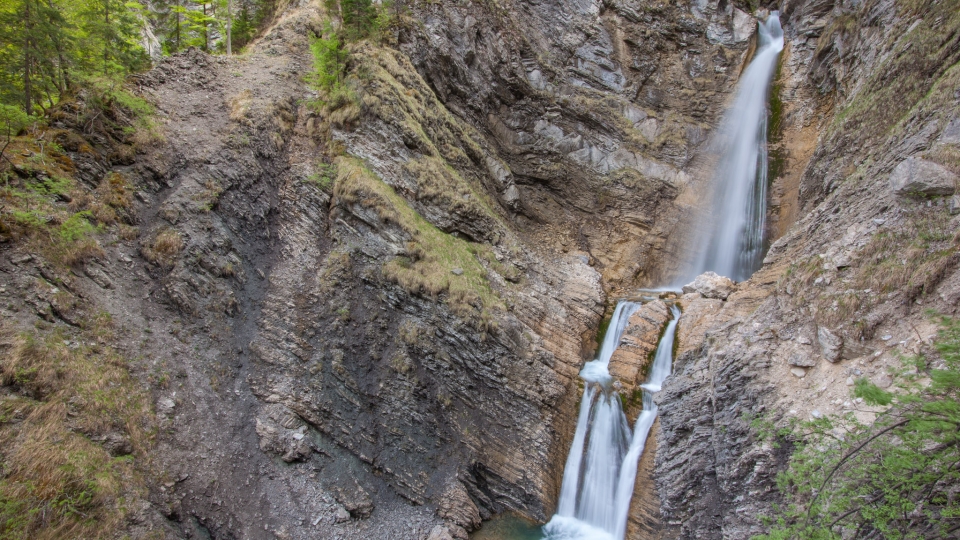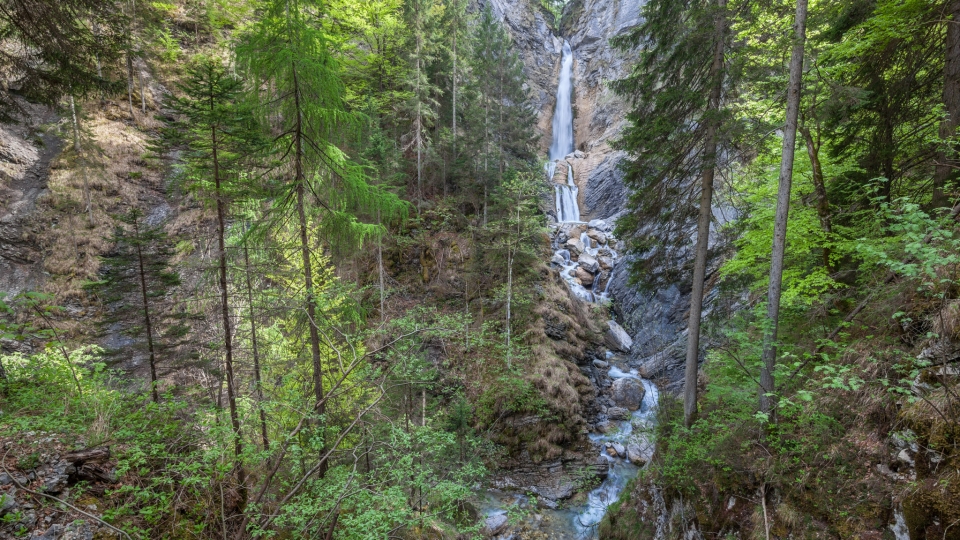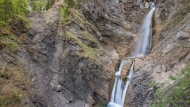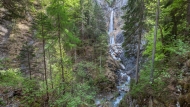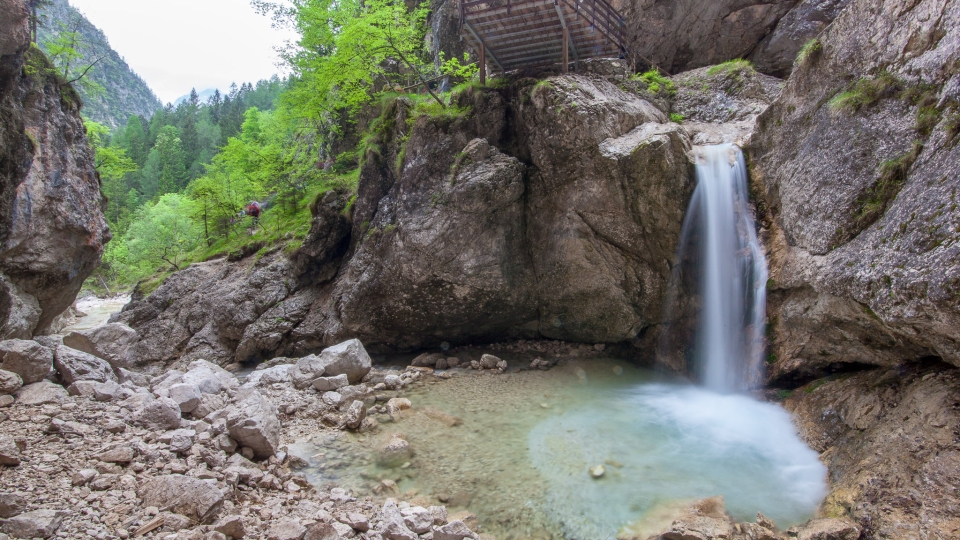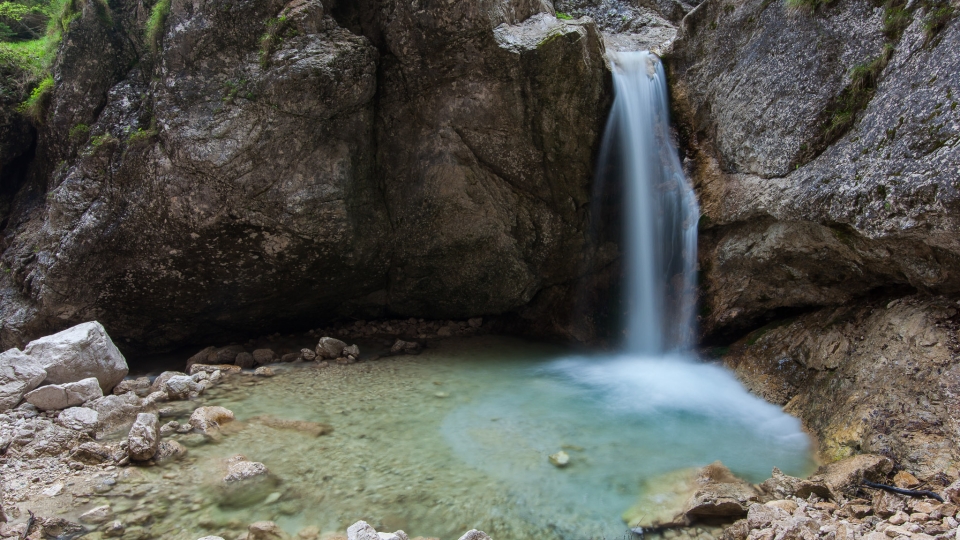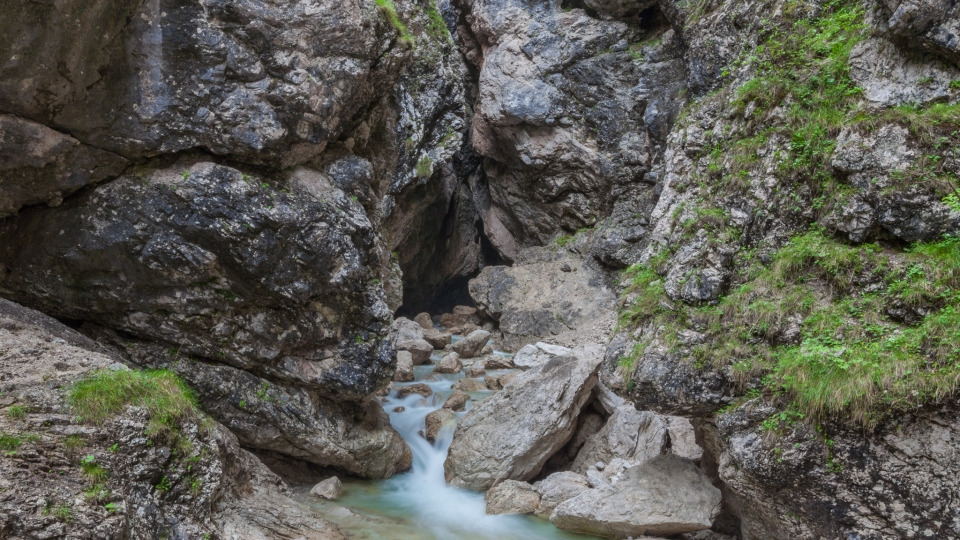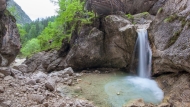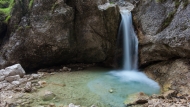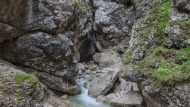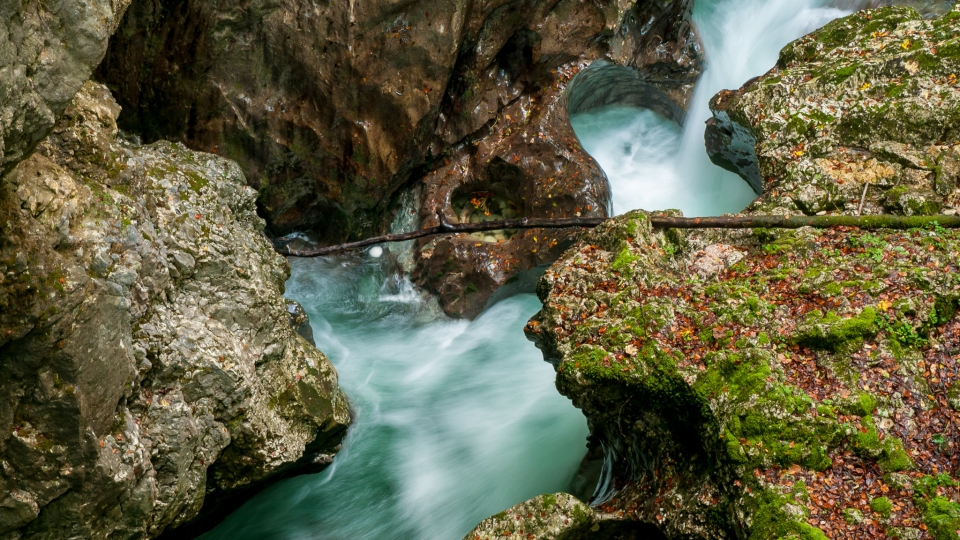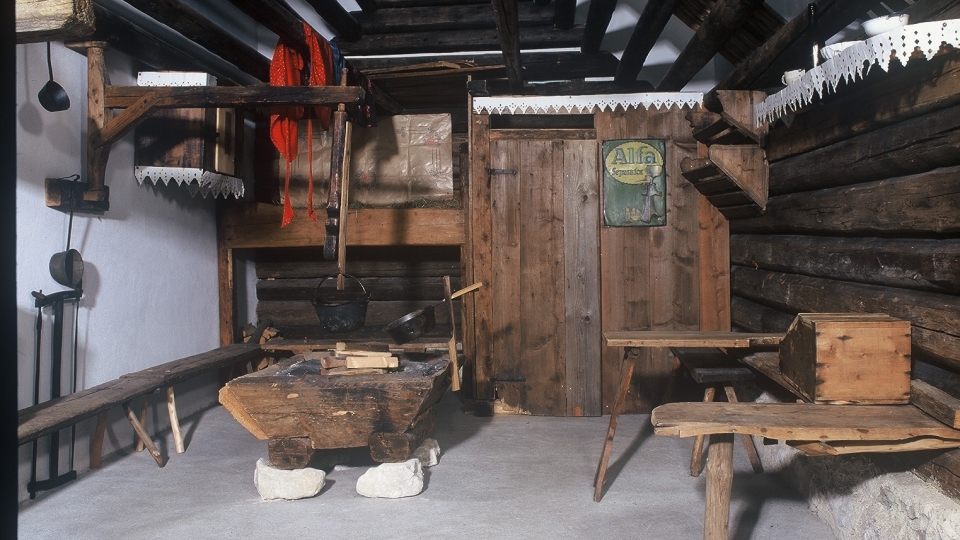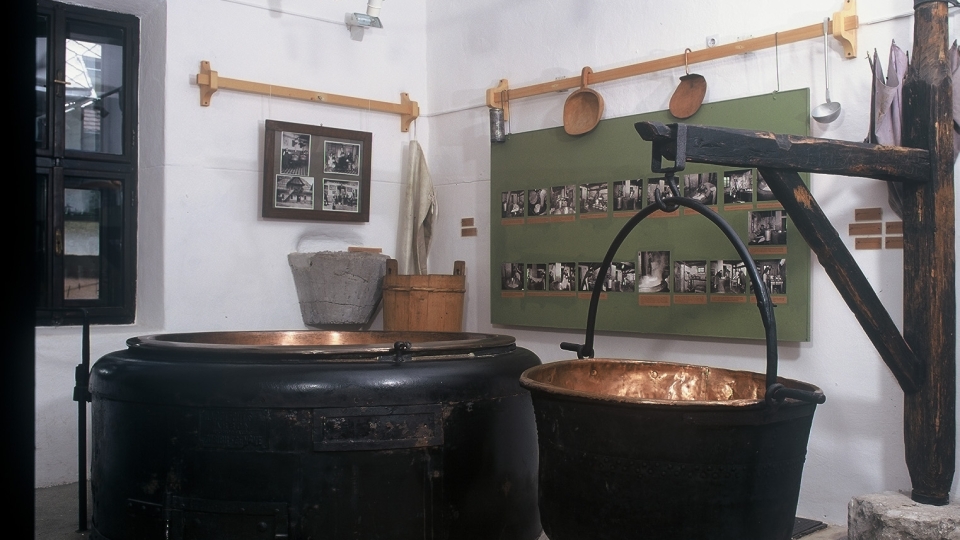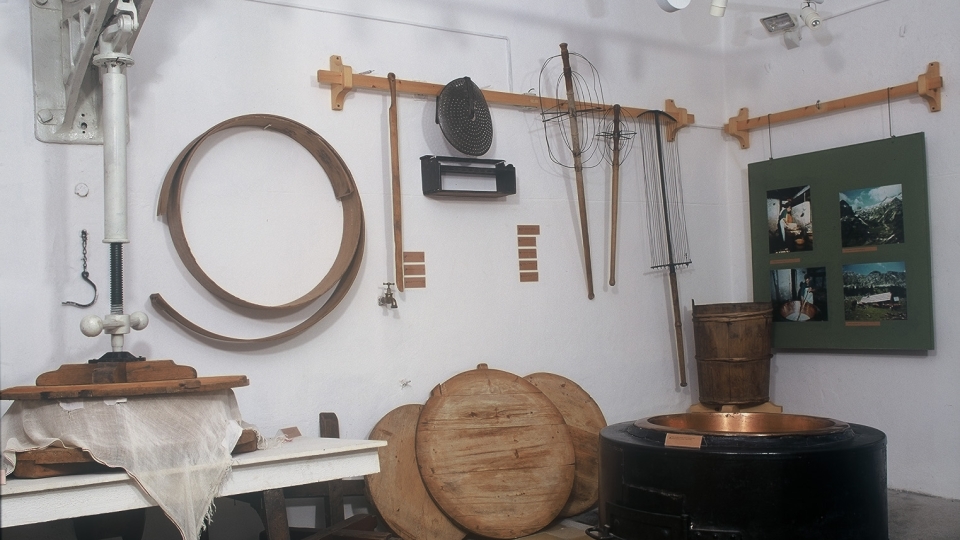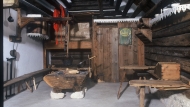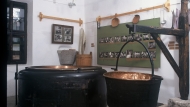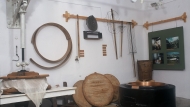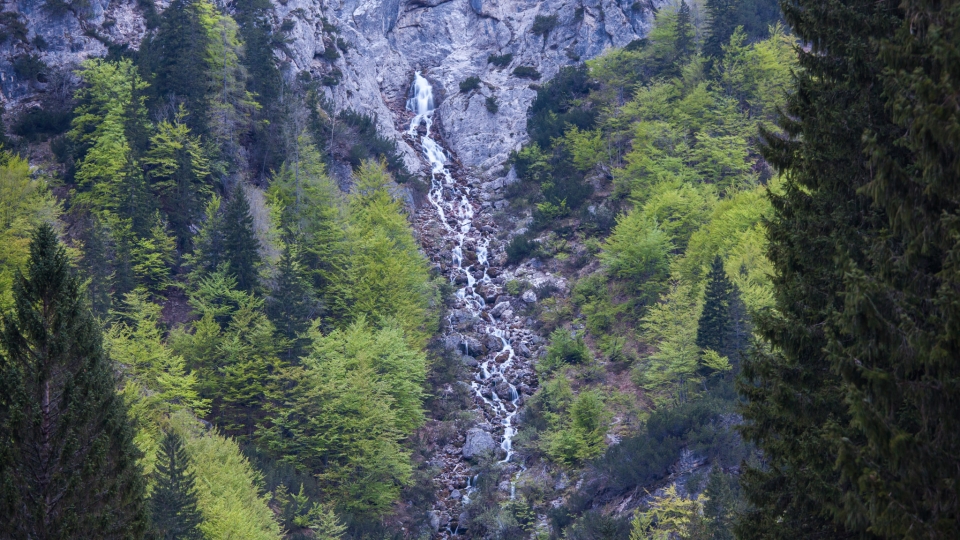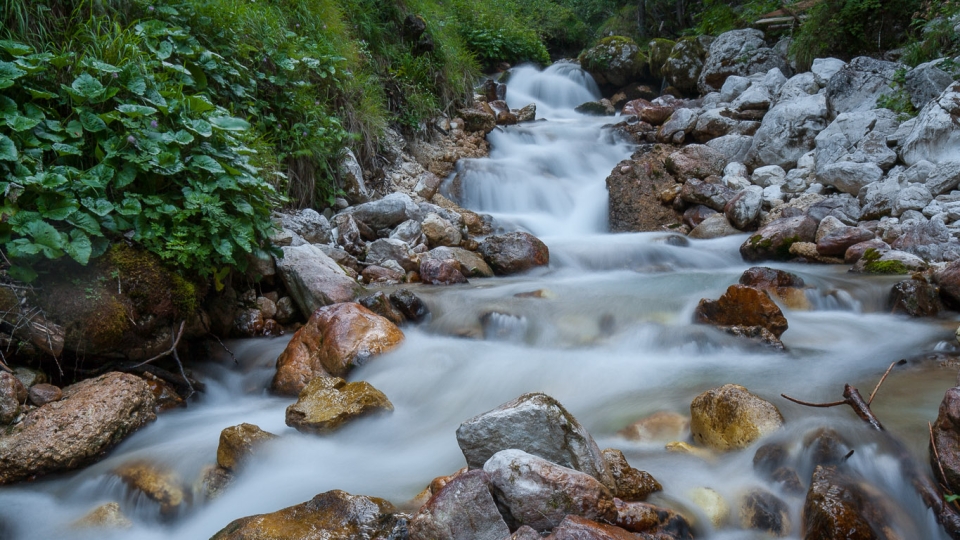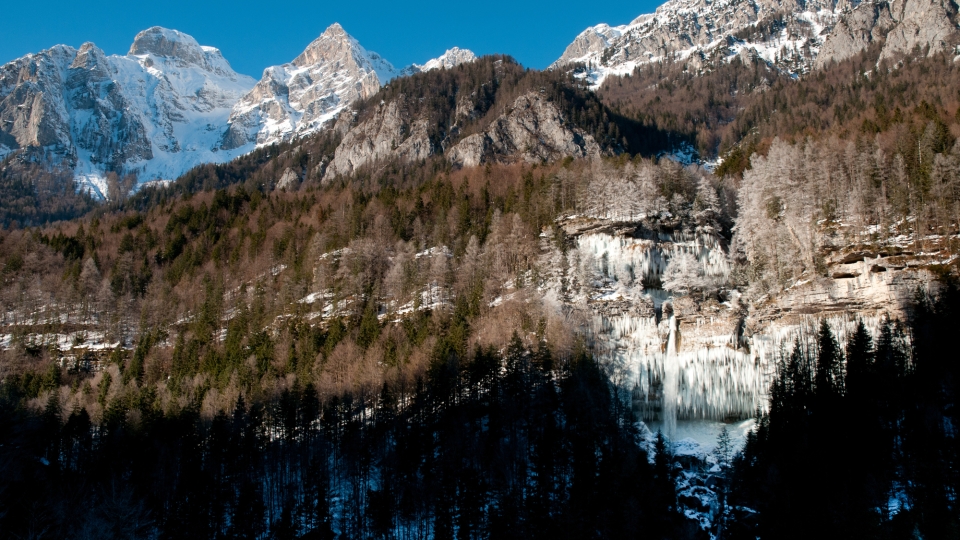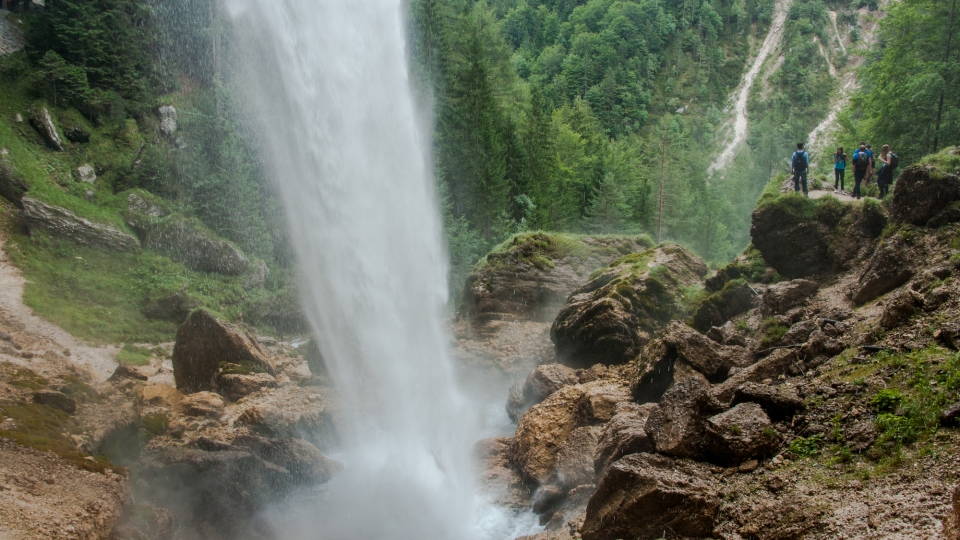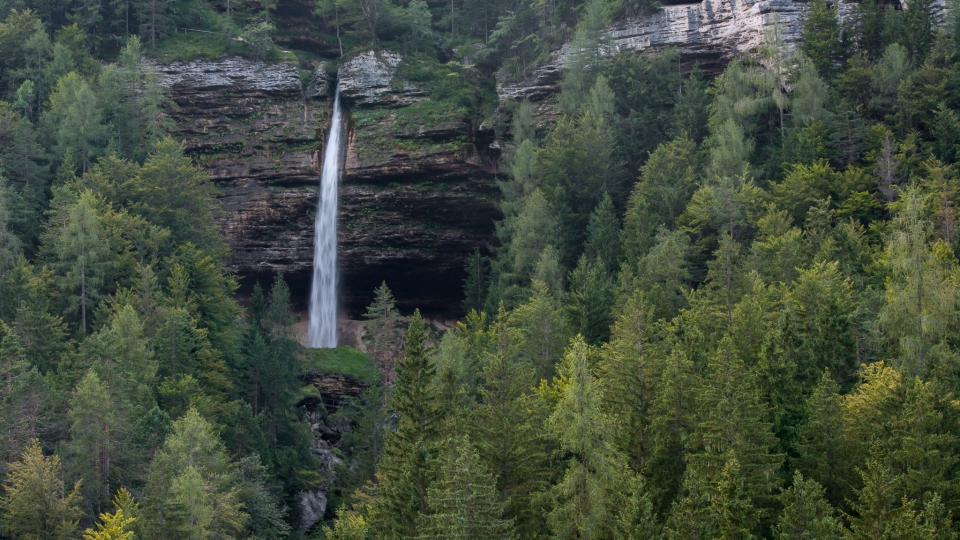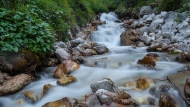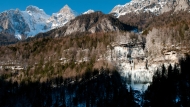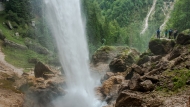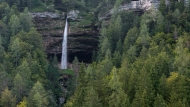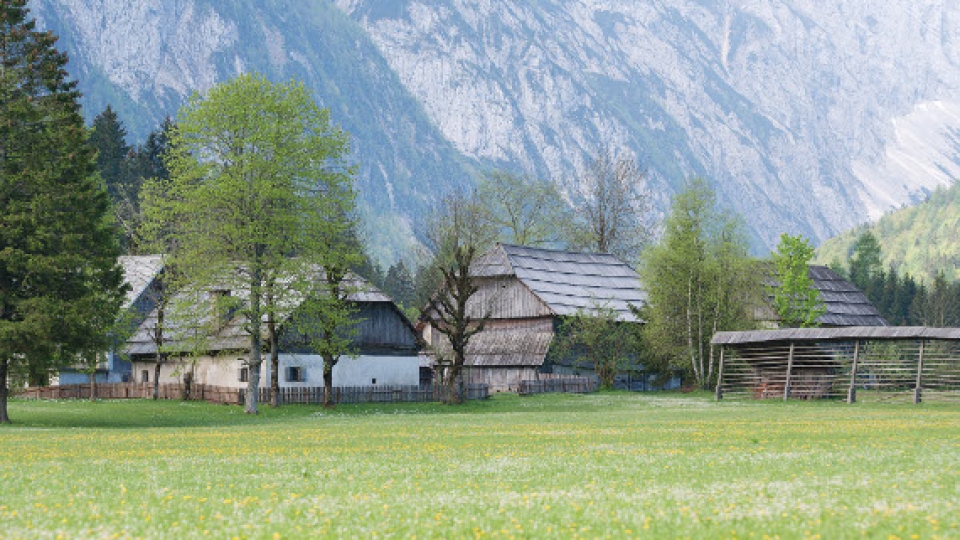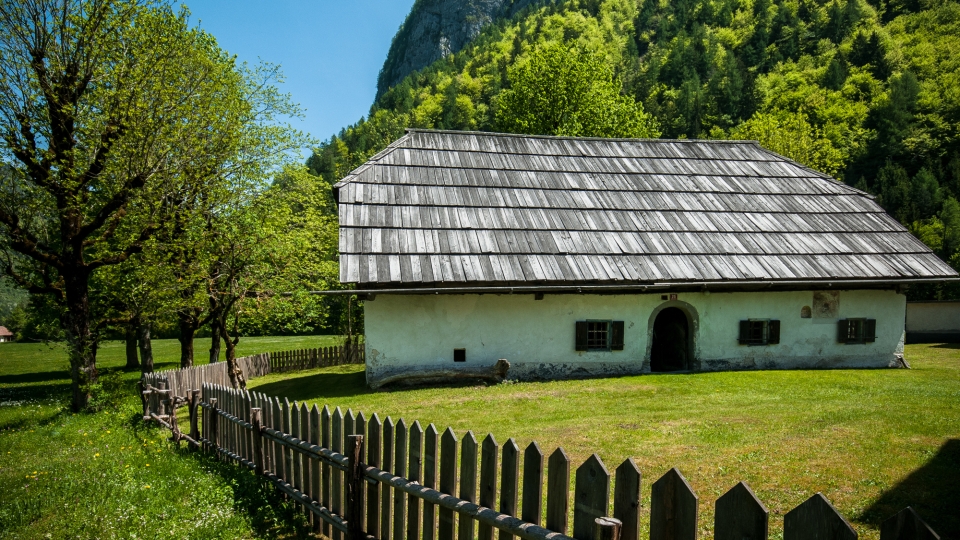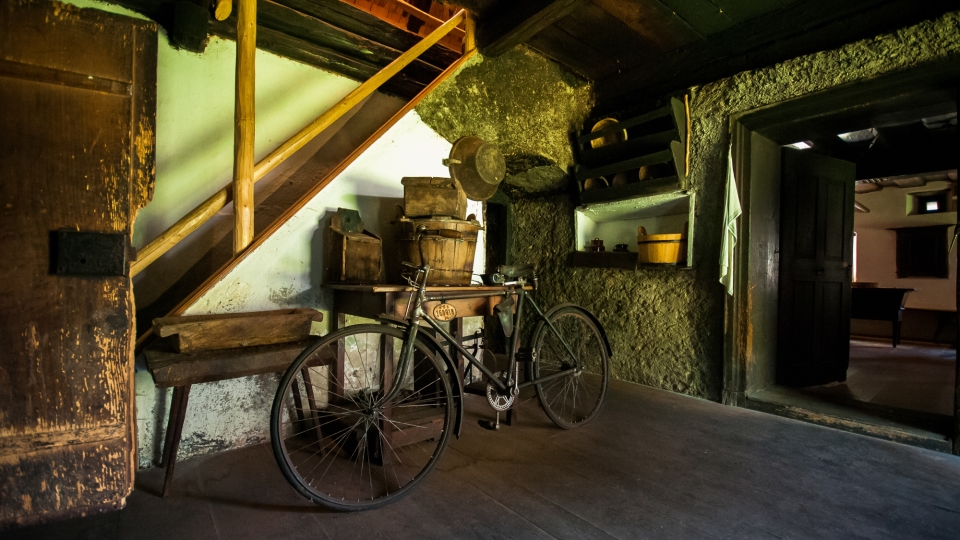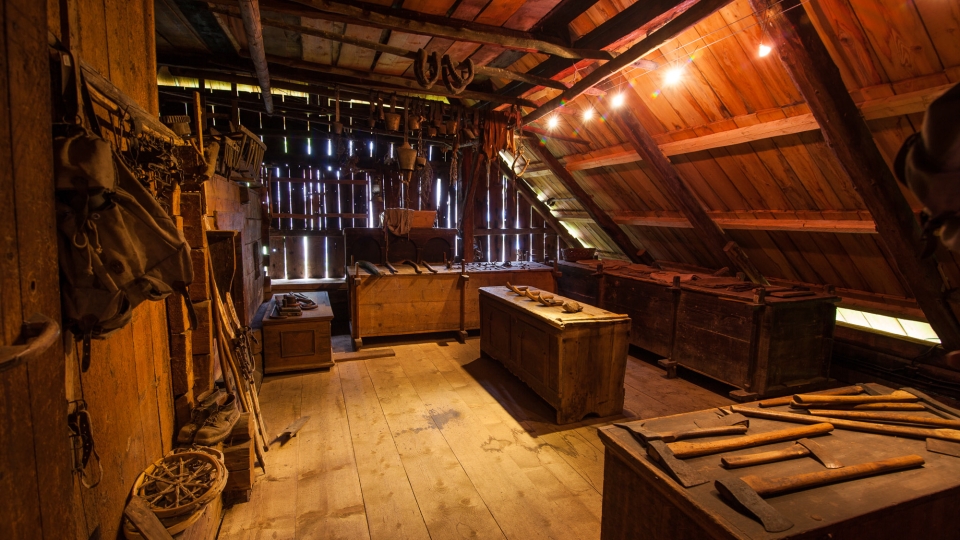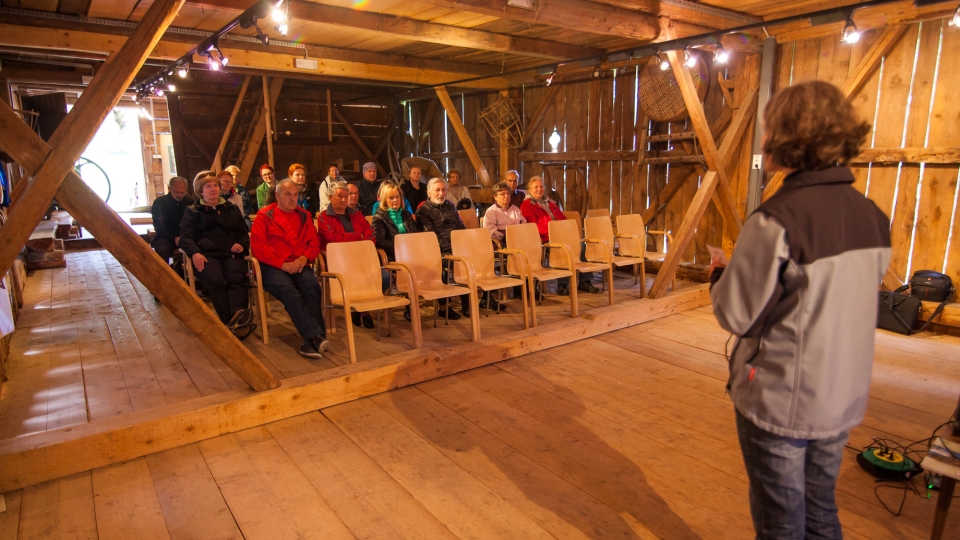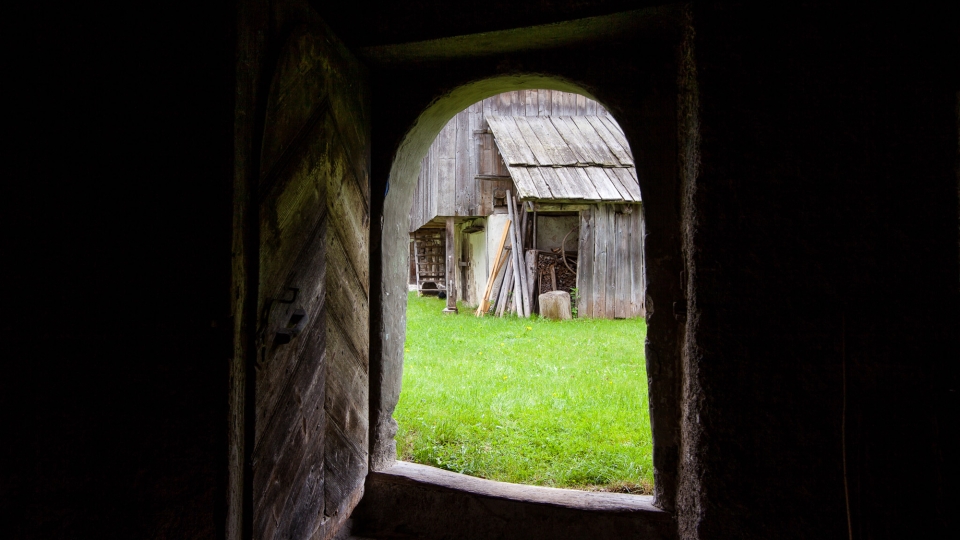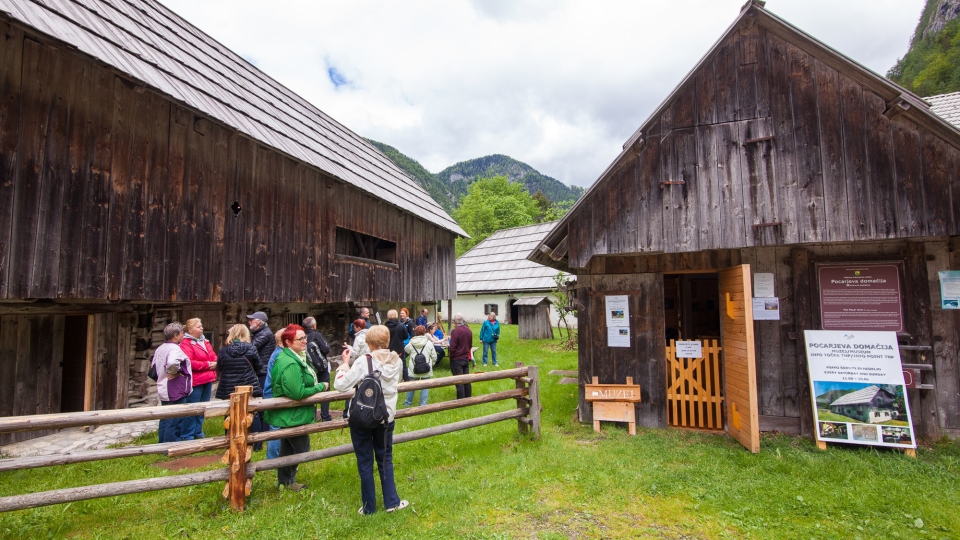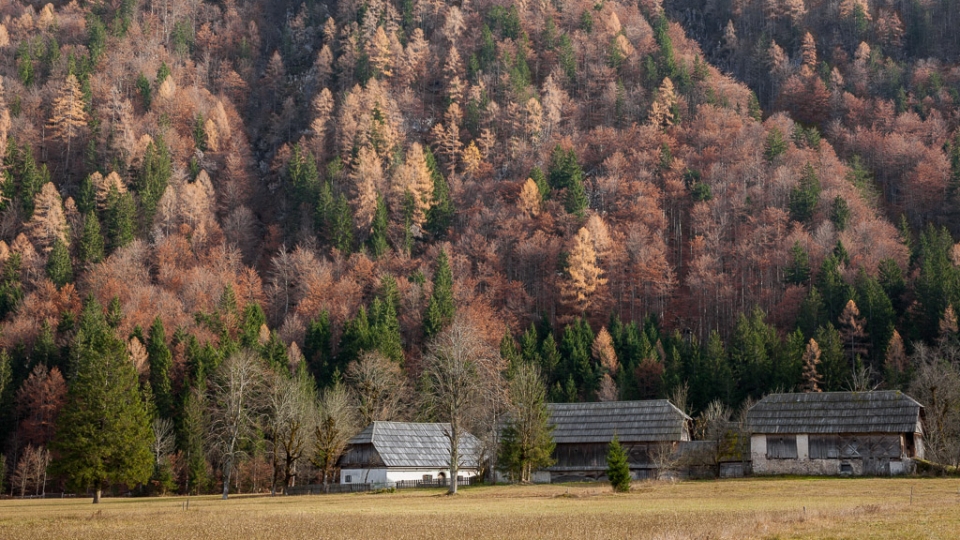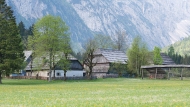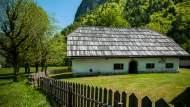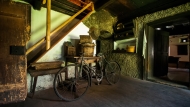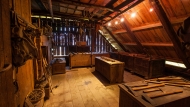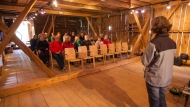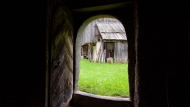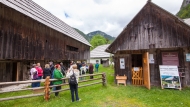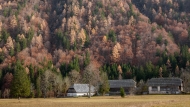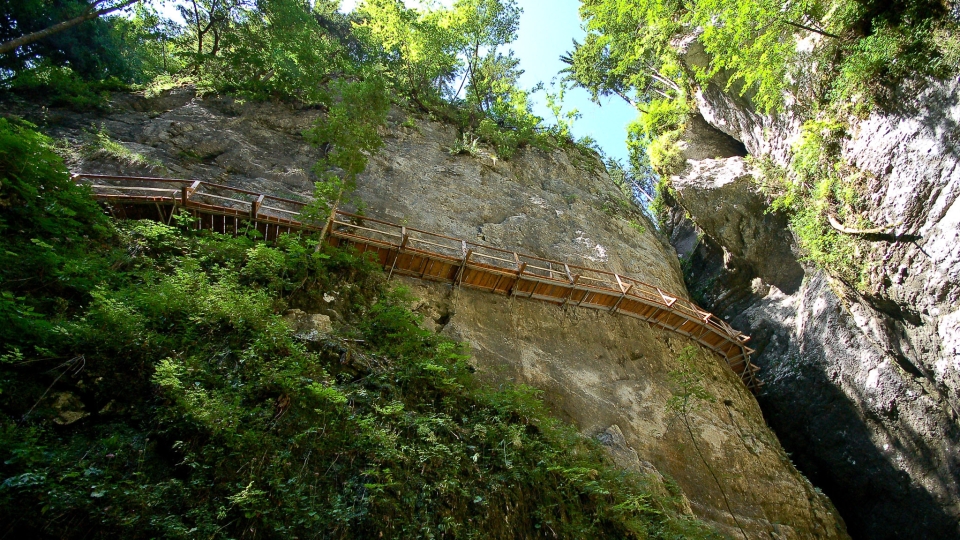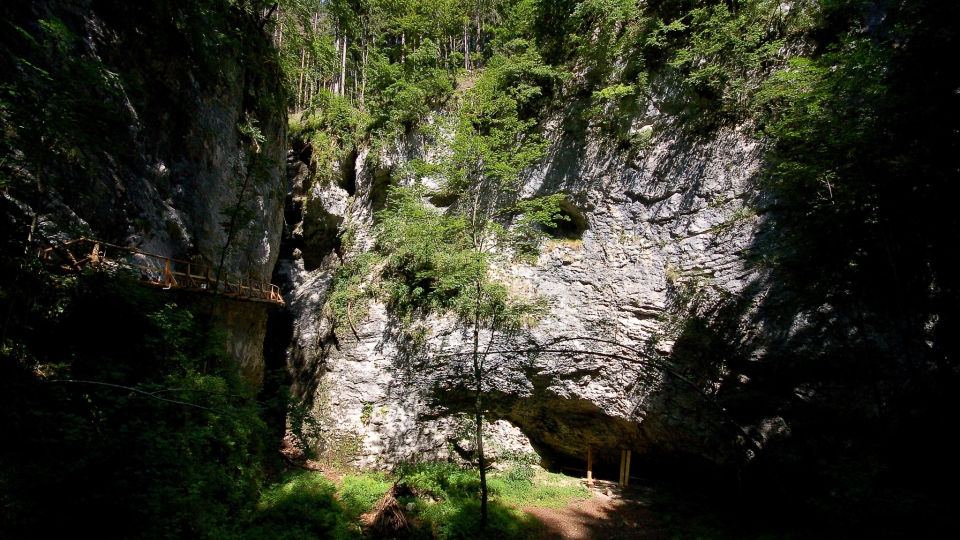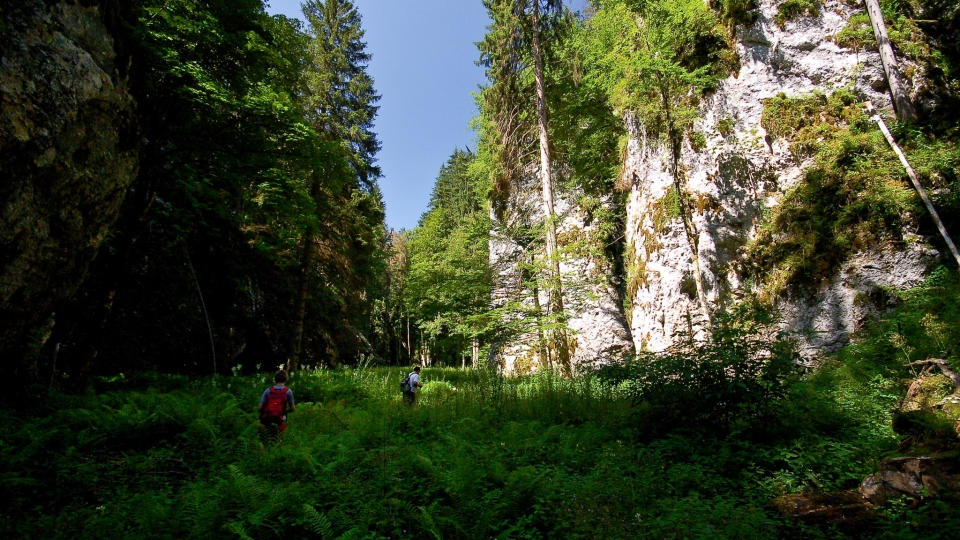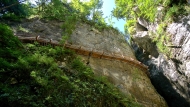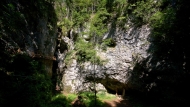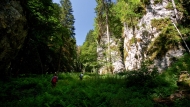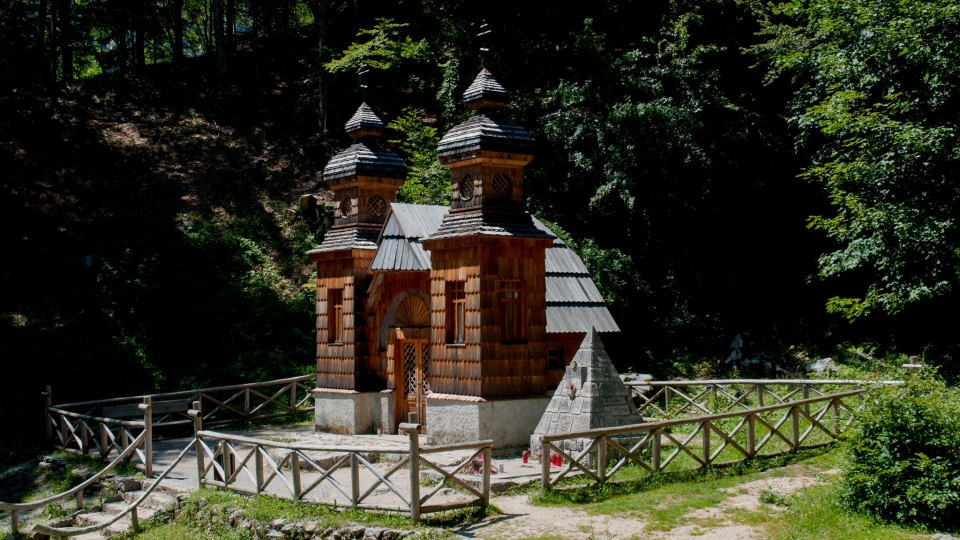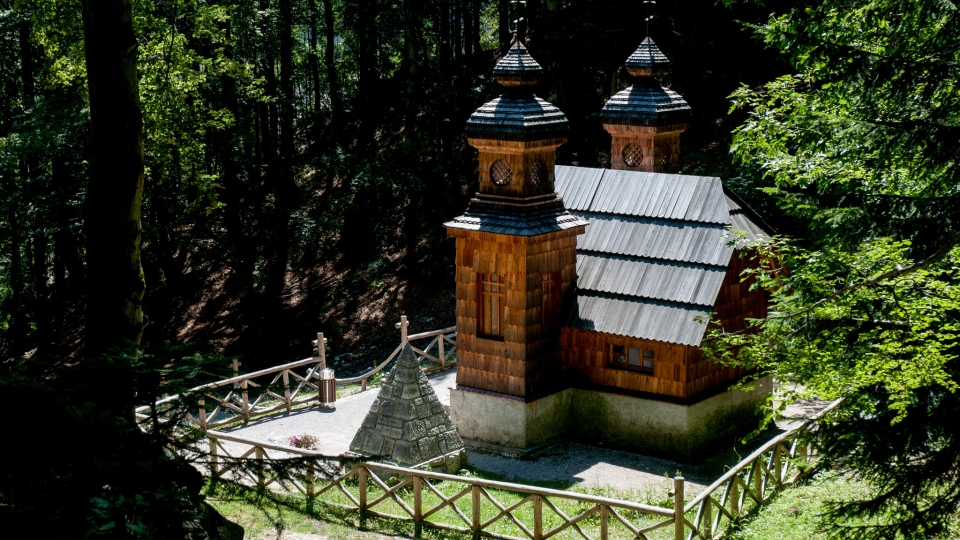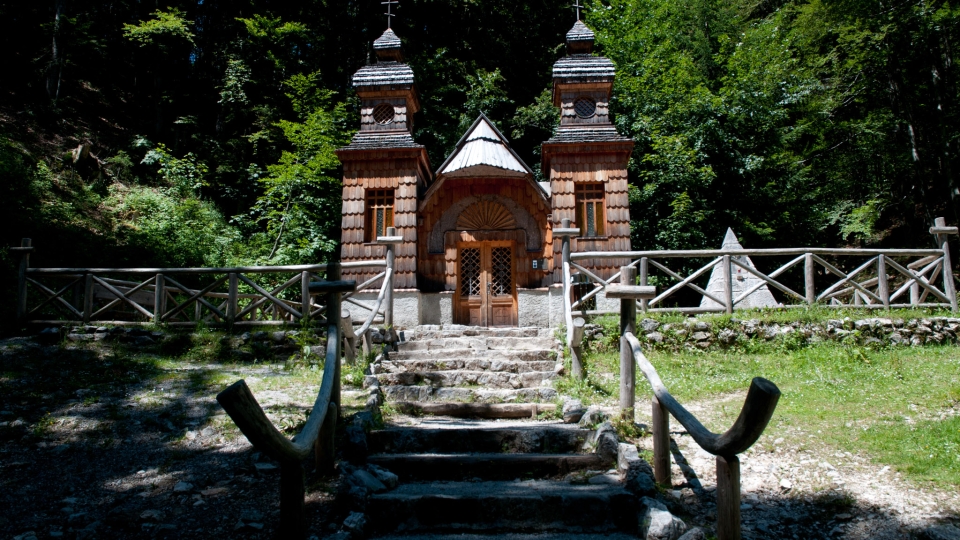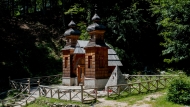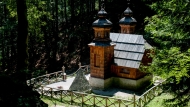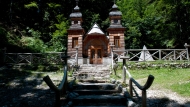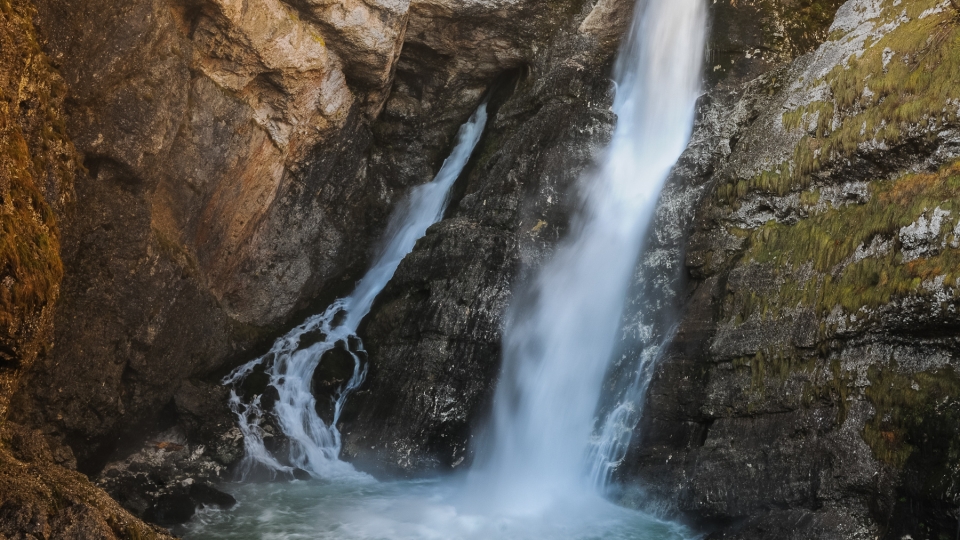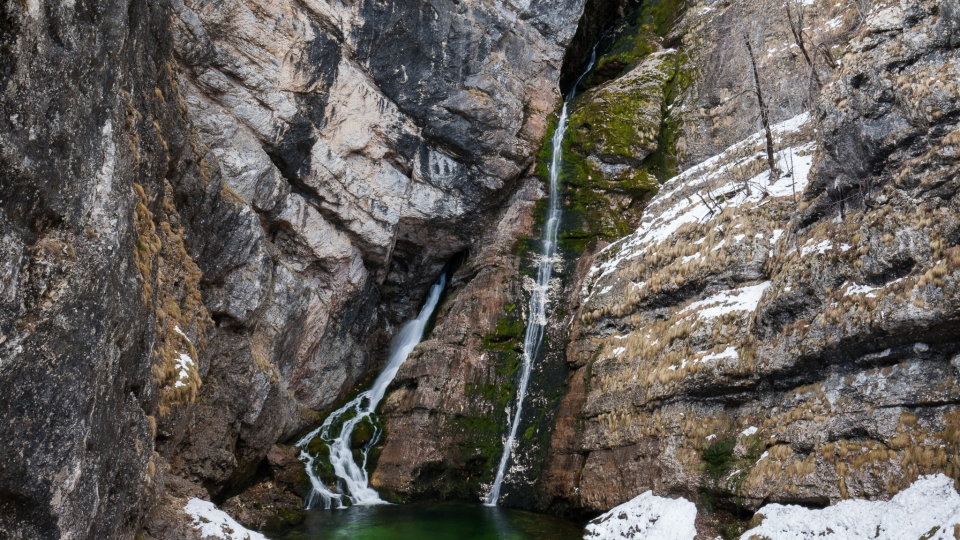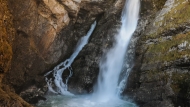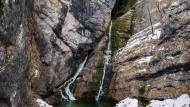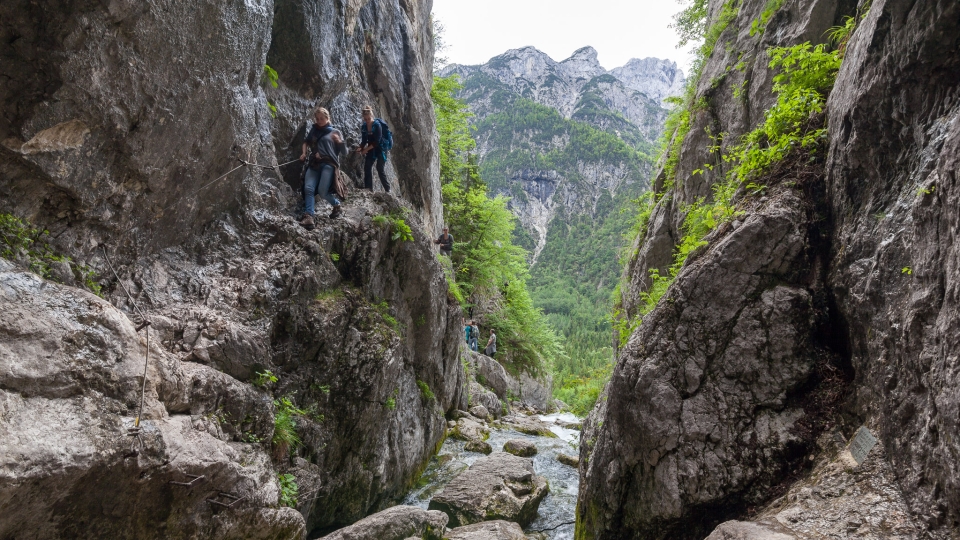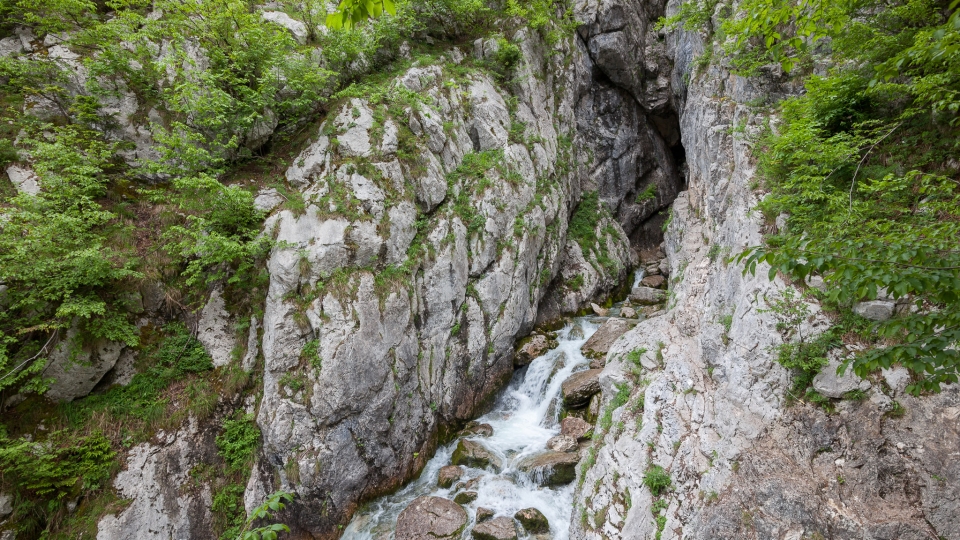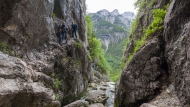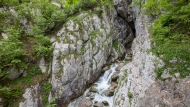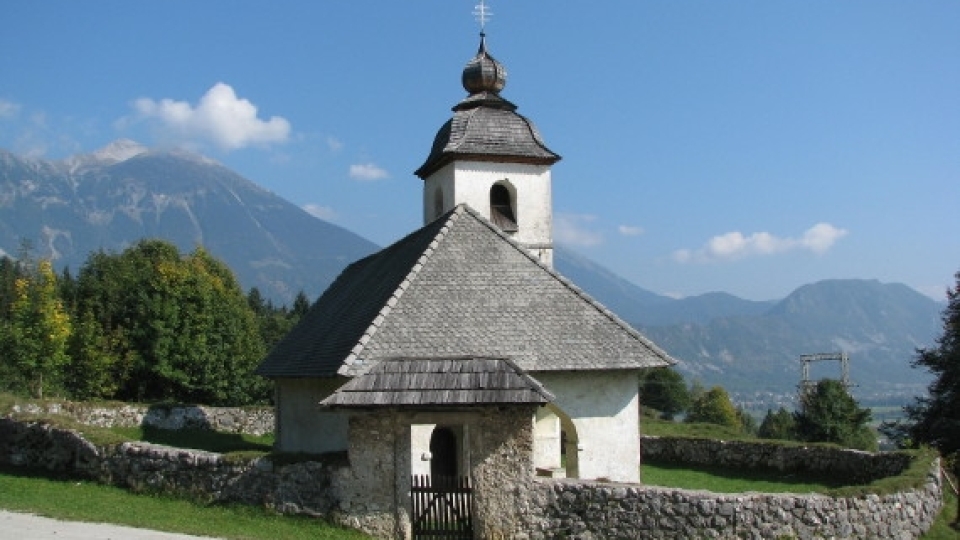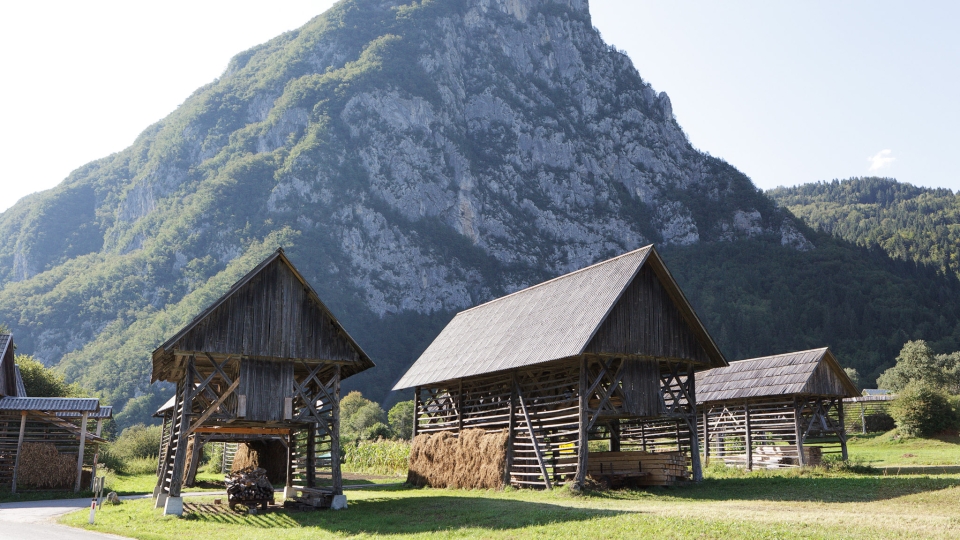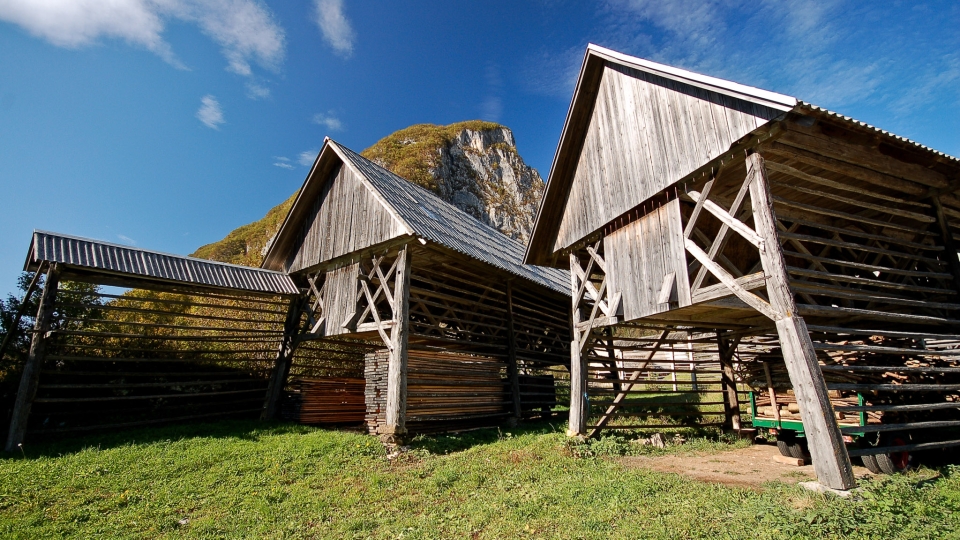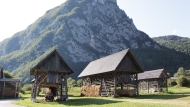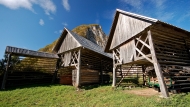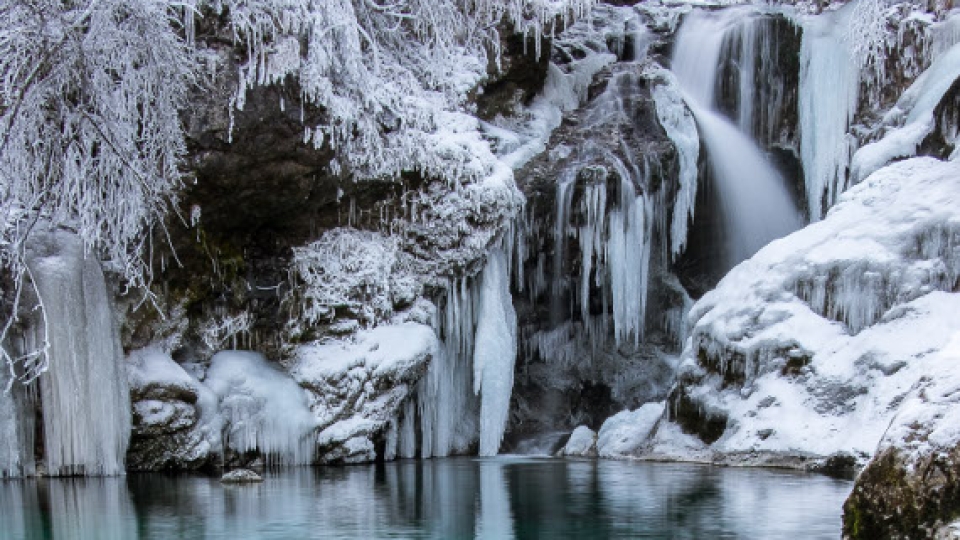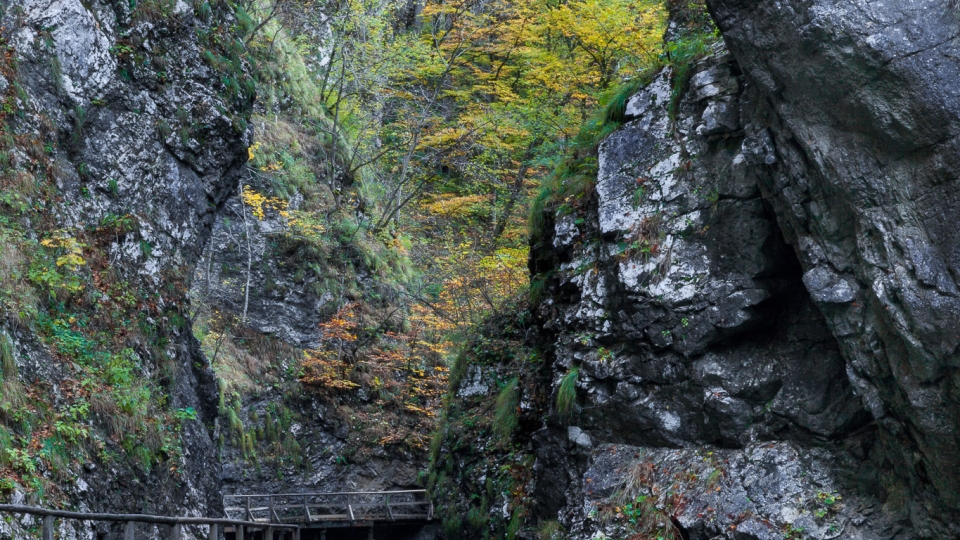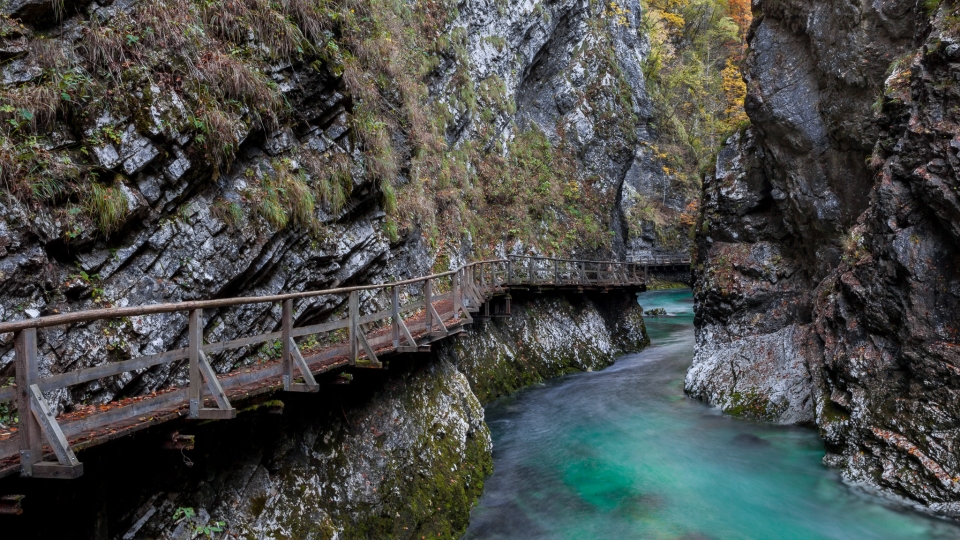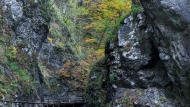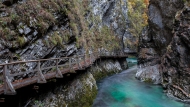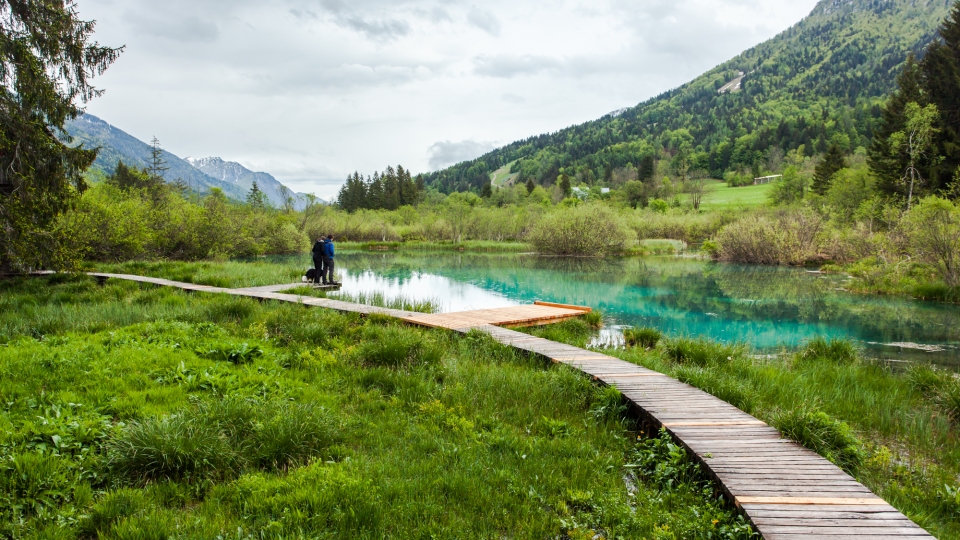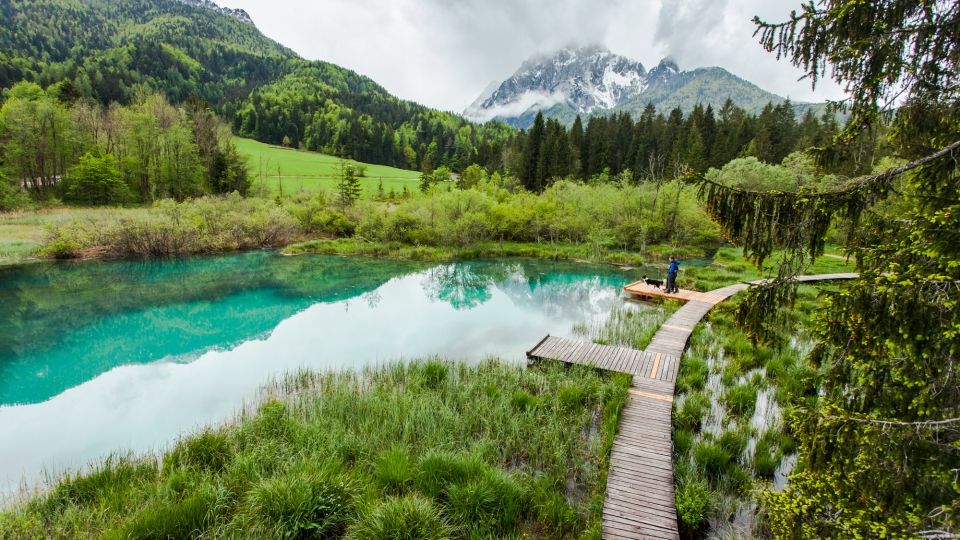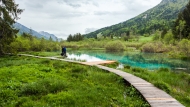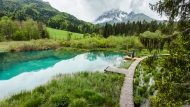Lake Bohinj is the largest permanent and natural lake in Slovenia, located in the Julian Alps in the north-west of the country. The main tributary of the lake is the Savica River, which in the western part of the lake basin pierces through moraines and flows into the lake at Ukanc. The lake is a flowing lake - the Jezernica flows out of the lake and after less than 100 m, together with the Mostnica, which flows in from Voje on the left, forms the Sava Bohinjka. Along the northern edge of the lake are several underwater karst springs, the most famous of which is Govic.
Crystal clear waters, mysterious gorges mighty waterfalls, beautiful churches, interesting museums and of course the famous Aljaž Tower. Find out what awaits you in the Triglav National Park
- Alpinium Juliana
- Lake Bohinj
- Mostnica Waterfall
- The Aljaž Tower on the Triglav
- The Castel and Memorial at Predel
- The Church of St. John
- The Church of the Holy Ghost in Javorca
- The four bold men
- The Gorge at Soča Valley
- The Julius Kugy Memorial
- The Kluže Castle
- The Martuljek Waterfalls
- The Mlinarica Gorge
- The Mostnica Gorge and Waterfalls
- The Museum of Alpine Dairy Farming
- The Nadiža Spring
- The Peričnik Waterfall
- The Pocar Homestead in Zgornja Radovna
- The Pokljuka Gorge
- The Russian Chapel
- The Savica Waterfalls
- The source of the Soča
- The St. Catherine's Church
- The Studor Village and the Stogov group
- The Šum Waterfall in the Radovna River
- Vintgar Gorge
- Zelenci
Alpinium Juliana
Alpinum Juliana is Slovenia's only Alpine botanical garden. It was set up in 1926 by Albert Bois de Chesne, a native of Trento, with the help of the Alpine flora experts Henri Correvon and Lino Vaccari, and Dr Julius Kugy, with information on the localities of rare plants. Today it is maintained by the Natural History Museum of Slovenia.
Around 1,000 species of plants, mostly from the Julian Alps, thrive on an area of 2,570 m2.
Lake Bohinj
Lake Bohinj is located in a glacially formed lake basin and holds almost 100 million cubic metres of water. According to the old Bohinj joke, only enough for one " bucket", if it is big enough. The lake basin, which descends steeply, is unbroken and almost free of shallows. The flowing lake warms up to 24°C at the surface in summer and often freezes in winter. The water level rises by more than 3 m during heavy rainfall.
Lake Bohinj is the largest natural permanent lake in Slovenia.
Mostnica Waterfall
In the upper part of the Voje valley, the Mostnica has carved short troughs with picturesque pools and a triple waterfall. The most eye-catching is the Middle Single-armed Waterfall with a height of 21 m.
The Aljaž Tower on the Triglav
The cylindrical metal flag tower at the top of Triglav (2864 m above sea level) was built in 1895 by Jakob Aljaž, a pastor and mountain lover from Dovje, who had previously bought the top of Triglav from the Dovje municipality for 1 forint. The tower was made by the master craftsman Anton Belec from Šentvid. Aljaž later donated the tower to the Slovenian Mountaineering Society.
Today, the tower is a remarkable landscape motif and an irreplaceable symbol of Slovenia.
The Castel and Memorial at Predel
The Austrians built a fortress near the Predel Pass in the early 19th century. The complex consists of a central building, several auxiliary rooms and connecting rooms with a stone staircase, as the fortress is divided into two parts by a road.
In 1809, a battle with the French took place here and most of the Austrian crew lost their lives. They were buried in a tomb under the road.
The Church of St. John
On the eastern shore of Lake Bohinj is the Gothic Church of St John with a Baroque bell tower and a covered entrance porch. The church nave is still Romanesque in its foundations, the chancel is Gothic, and the nave vault is late Gothic.
The frescoes are famous: among the oldest in Slovenia is the fresco of St John the Evangelist drinking poison in front of the priest Aristodemus.
The Church of the Holy Ghost in Javorca
In 1916, Austro-Hungarian soldiers of the 3rd Mountain Brigade built a memorial church designed by the architect Remigius Geyling from Vienna. For a long time and in secret, they chose a location for the church that would be inconspicuous to the enemy and equidistant from the battlefields of Vodil vrh, Mrzlemu vrh, Slemen and Red Rim.
On the south and north sides of the ship, the "wooden leaves" of the Book of the Dead are inscribed with the names of 2808 soldiers who fell on the surrounding hills.
The four bold men
The monument commemorates the first ascent of Triglav on 25 August 1778 by 4 local climbers, Lovro Wilomitzer, Štefan Rožič, Matevž Kos and Luka Korošec. It was erected in 1978, on the occasion of the 200th anniversary of the first ascent.
The monument is the work of academic sculptor Stojan Batič.
The Gorge at Soča Valley
The Soča River has carved out its most famous troughs near the village of Soča, where the 750-metre-long Great Troughs run up to 15 metres deep between banks that are sometimes only 2 metres apart.
The troughs can be viewed from the footbridge and end at the beginning of the Lepena valley.
The Julius Kugy Memorial
In his books, he sang of the beauty of the mountain world and expressed in an artistic way his affection for the people who live in the mountains and his love for the small and hidden values, thus creating a lasting monument to the Julian Alps and the Trentar Alps.
Dr Julius Kugy (1858-1944) was one of the greatest admirers of the Julian Alps and the Trenta Valley. With the help of local mountain guides, he was the first to climb many mountain peaks in the Julian Alps, and many of them were ascended by new routes.
The Kluže Castle
Kluže Fortress is located 4 km from Bovec in the direction of Predel Pass. The original Venetian fortress was built in the 15th century to defend against the Turks. In 1509 it was occupied by the Austrian army. In the first half of the 17th century, it was enlarged. It played an important role in the French wars and was demolished in 1797.
In 1882, a new fortress was built on the same site, and during World War I it was the headquarters of Austro-Hungarian troops.
The Martuljek Waterfalls
The Martuljek stream travels 500 m above sea level over steep slopes and cliffs in a highly variable gradient.
It descends in waterfalls, jumpers (a larger rock in the bed of a stream or river that causes a rapids, a smaller waterfall) and rapids.
The Mlinarica Gorge
Mlinarica, a left tributary of the Soča, rises below Prisank and Razor. The valley narrows in the lower reaches into kilometre-long unique troughs - the narrowest sections are only about 1m wide. The maximum depth is estimated at 70-80 m.
In several places, the rocks have formed natural bridges.
The Mostnica Gorge and Waterfalls
Downstream, from the mountain lodge on the Voje mountain to the village of Stara Fužina, it is cut into limestone troughs, which are about 2 km long with smaller intervals, the deepest at the Devils Bridge (20 m) and in some places only a metre wide.
In the upper part of the Voje valley, the Mostnica has carved short troughs with picturesque pools and a triple waterfall. The most eye-catching is the Middle Single-armed Waterfall with a height of 21 m.
The Museum of Alpine Dairy Farming
The documentary material tells about the life of the pastoralists, cheese factories and cheese-making work in the mountains, transport to the valley, typical Bohinj pastoral settlements and pastoral buildings.
The Shepherd's Museum is housed in an abandoned village cheese factory, where cheese was made until a few decades ago. The original equipment has been preserved.
The Nadiža Spring
A strong karst spring in the Ponce escarpment north-west of the mountain hut in Tamar. The water falls over a dolomite sill in a small waterfall along a fault along the spring. The path continues in the waterfall to the valley floor and disappears through the gravel to the ground.
Nadiža comes to light again in Zelenci.
The Peričnik Waterfall
After the glacier retreated from the Vrata valley, the Peričnik stream began to fall from the overhanging side valley over the conglomerate wall.
Above the Lower Peričnik, which falls 52 m and is one of the few free-falling Slovenian waterfalls, the Upper Peričnik, which is much lower at 16 m, has carved its way across the stage.
The Pocar Homestead in Zgornja Radovna
The homestead Zgornja Radovna No.25, at Pocar, was selected, purchased and arranged as a cultural monument of folk architecture in the Triglav National Park due to its location, age, preservation, exceptional coherence and harmony of the buildings, which are furnished with numerous small objects of everyday use, and due to a combination of other circumstances.
Pocar's house is dated 1775 on the ceiling beam in the "house".
The Pokljuka Gorge
Almost 2 km long, the Pokljuka Gorge was carved out 10 000 years ago by the former flow of the Ribščica River as the glaciers retreated. When the water dried up, it left behind the largest fossil gorge in Slovenia. In some places, it narrows to just a few metres, and its walls are up to 50 metres high. Intermediate widenings are called nurseries.
The narrowest part was spanned by wooden bridges as early as 1930.
The Russian Chapel
The chapel was built in 1917 to commemorate the tragedy of Russian prisoners of war who were building a road across Vršič and were caught in an avalanche. 110 prisoners and a few guards died.
Their remains were buried in a tomb marked by a brick pyramid, and a chapel with two towers and a hipped roof was built next to it.
The Savica Waterfalls
The water comes from the Velika Savica cave, formed in a break in the Komarča rock face, as a strong karst spring. After a few rapids, it begins to slide obliquely 38 m to the mouth of the main part of the waterfall and splits in the shape of the letter A, before plunging almost vertically to a depth of 51 m. The total height of the waterfall is 78 m.
It was described by the greatest Slovenian poet, France Prešeren, in his The Baptism at Savica.
The source of the Soča
In Last Trenta, there is one of the most beautiful karst springs in our mountains. The waters, which collect in the area of Jalovec, Šit, Travnik and Mojstrovka, flow daily from a cave with an underground lake and cascade down a waterfall into the riverbed. The entrance to the original abyss can be seen during the dry season, when the water flows through the bedrock.
The Soča River carved its way relatively quickly into the rocky obstacles and hollowed out the troughs, which are the most numerous and most significant in Slovenia along the Soča River.
The St. Catherine's Church
The Church of St Catherine above Zasip is a typical Gothic church with a brick-built nave, a late Gothic presbytery, frescoes and Baroque altars. It stands on a point from where you can enjoy a beautiful view of the surrounding area. The walls around the church are the remains of a fortified anti-Turkish camp.
Saint Catherine used to be a famous pilgrimage church.
The Studor Village and the Stogov group
Studor is a clustered settlement situated at the foot of the Studor mountain (1002 m) in the Upper Bohinj valley. Most of the houses are built in Alpine style, with two storeys and "porches".
The buildings have typical rustic Baroque and Classicist decoration, and some Bohinj black kitchens have been preserved.
The Šum Waterfall in the Radovna River
It is part of the Vintgar Gorge, whose beauty was discovered by Bled holidaymakers more than a hundred years ago. It is the only river waterfall in the Triglav National Park.
At the exit from the nature of the Bled Vintgar, the Radovna falls in a mighty, wide waterfall 13 m deep.
Vintgar Gorge
In the geological past, the Bohinj glacier dammed the Radovna River, forming a lake. The river then broke through the limestone stack and flowed into the Sava Dolinka. It carved a 1600 m long gorge called Vintgar. The gorge is enriched by rapids, pools and erosion pots.
The steep and precipitous walls of the vintgar are 50-100 m high.
Zelenci
The first source of the Sava Dolinka is the Nadiža in Tamar, but the river soon runs dry. It comes to the surface again in Zelenci, at the junction with an impermeable moraine embankment, and also boils to the surface in numerous ground springs made of white lacustrine chalk.
The water collects in an emerald-coloured lake and small water windows called cauldrons or tumfs, which are surrounded by a variety of vegetation.

